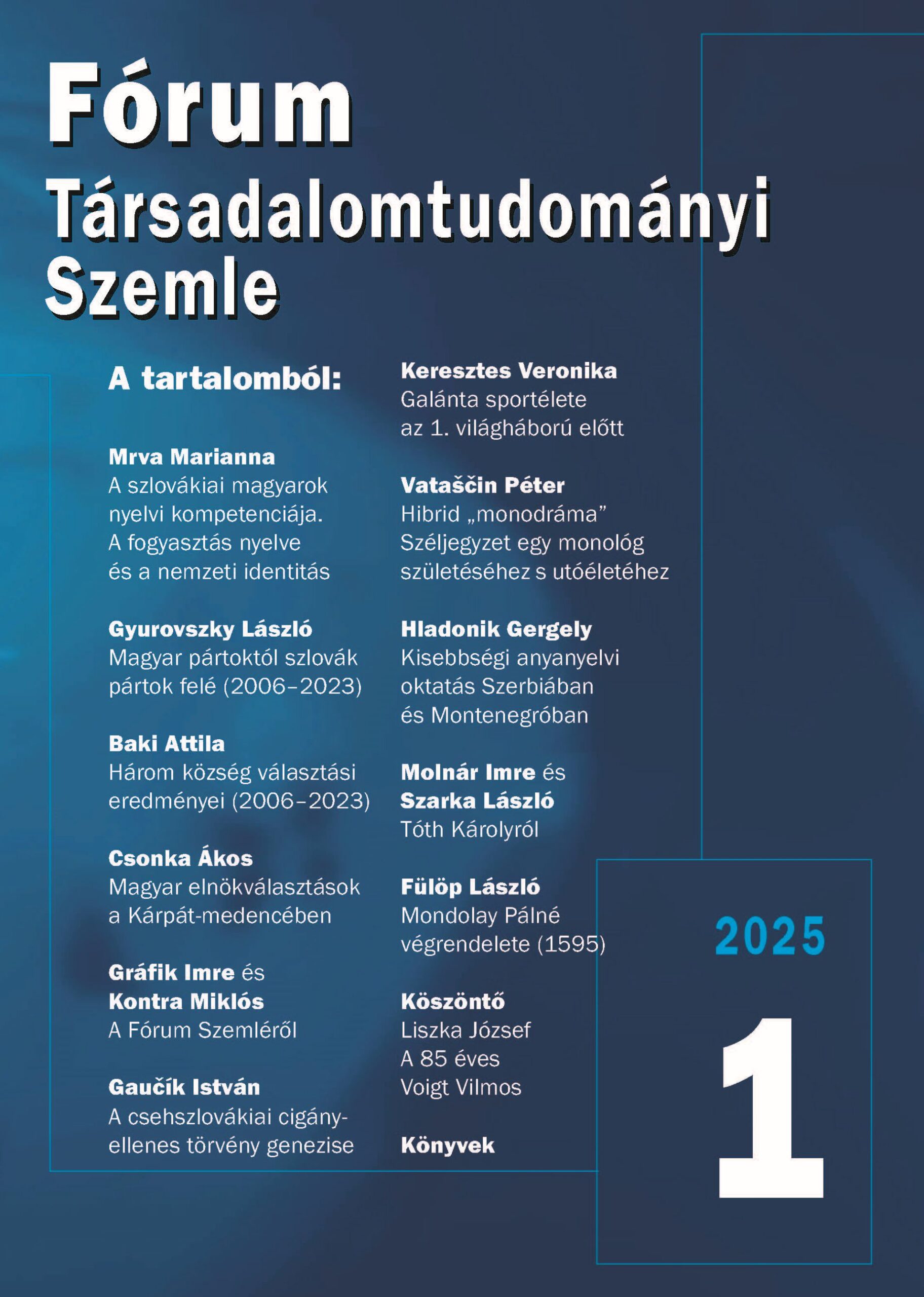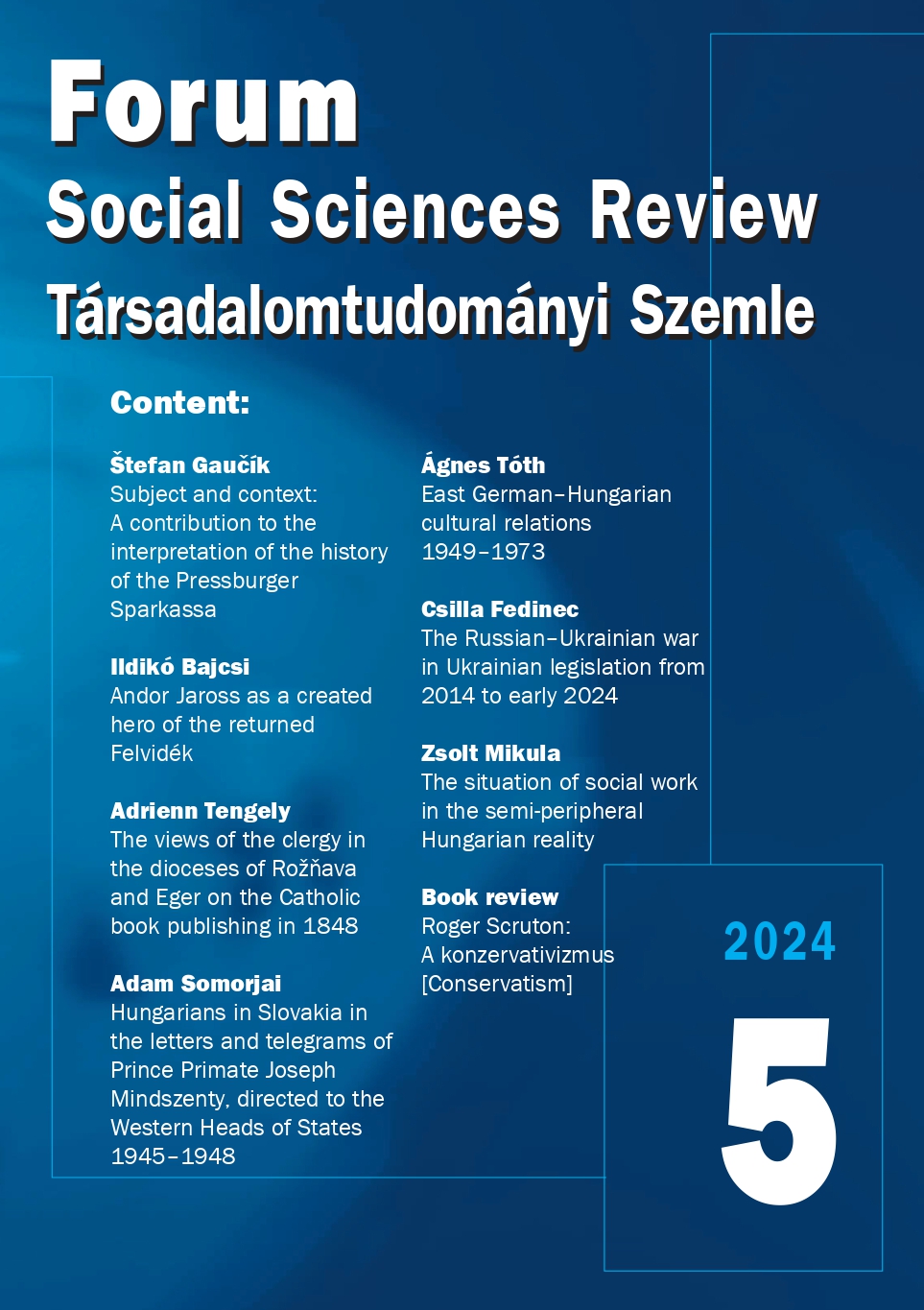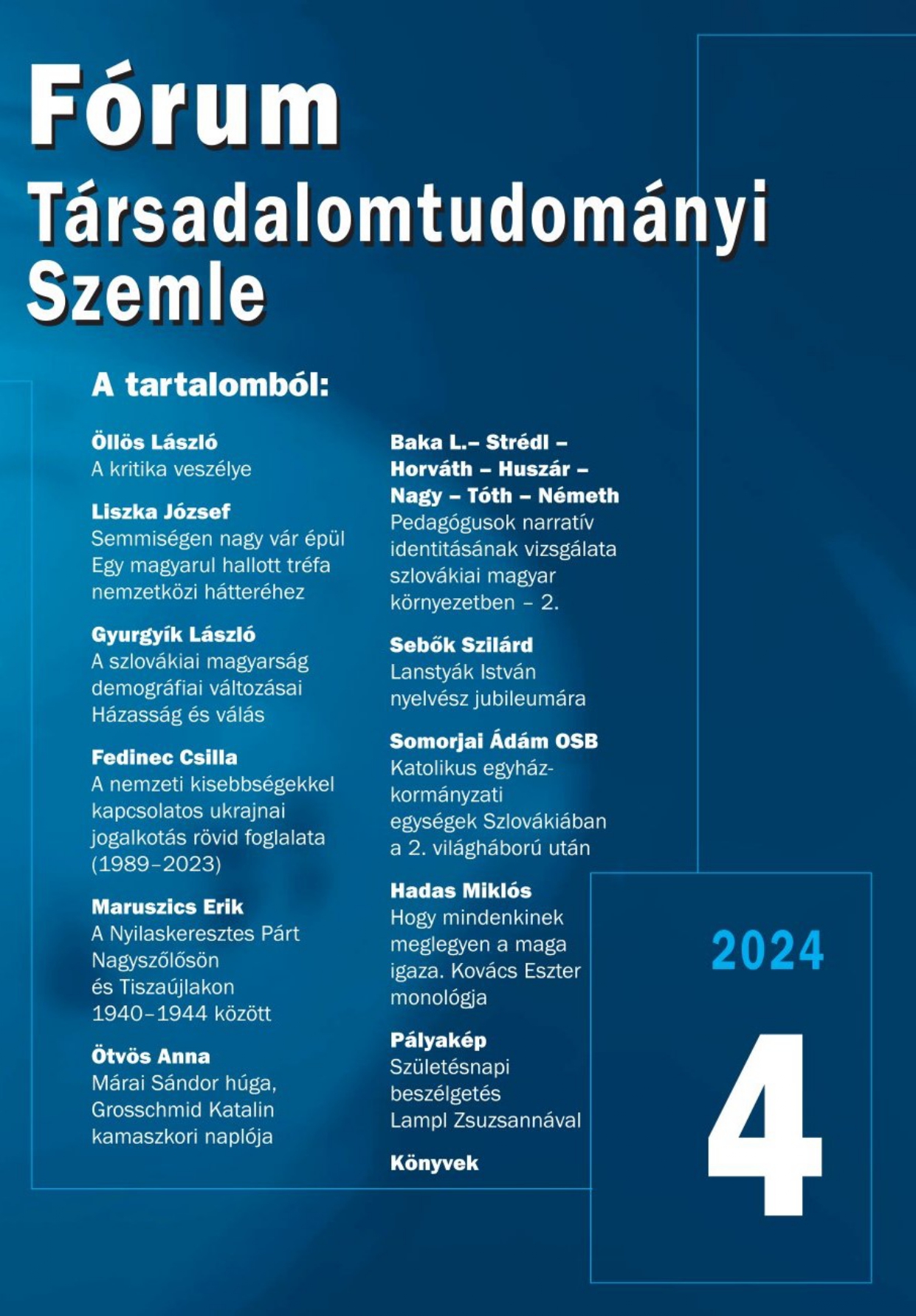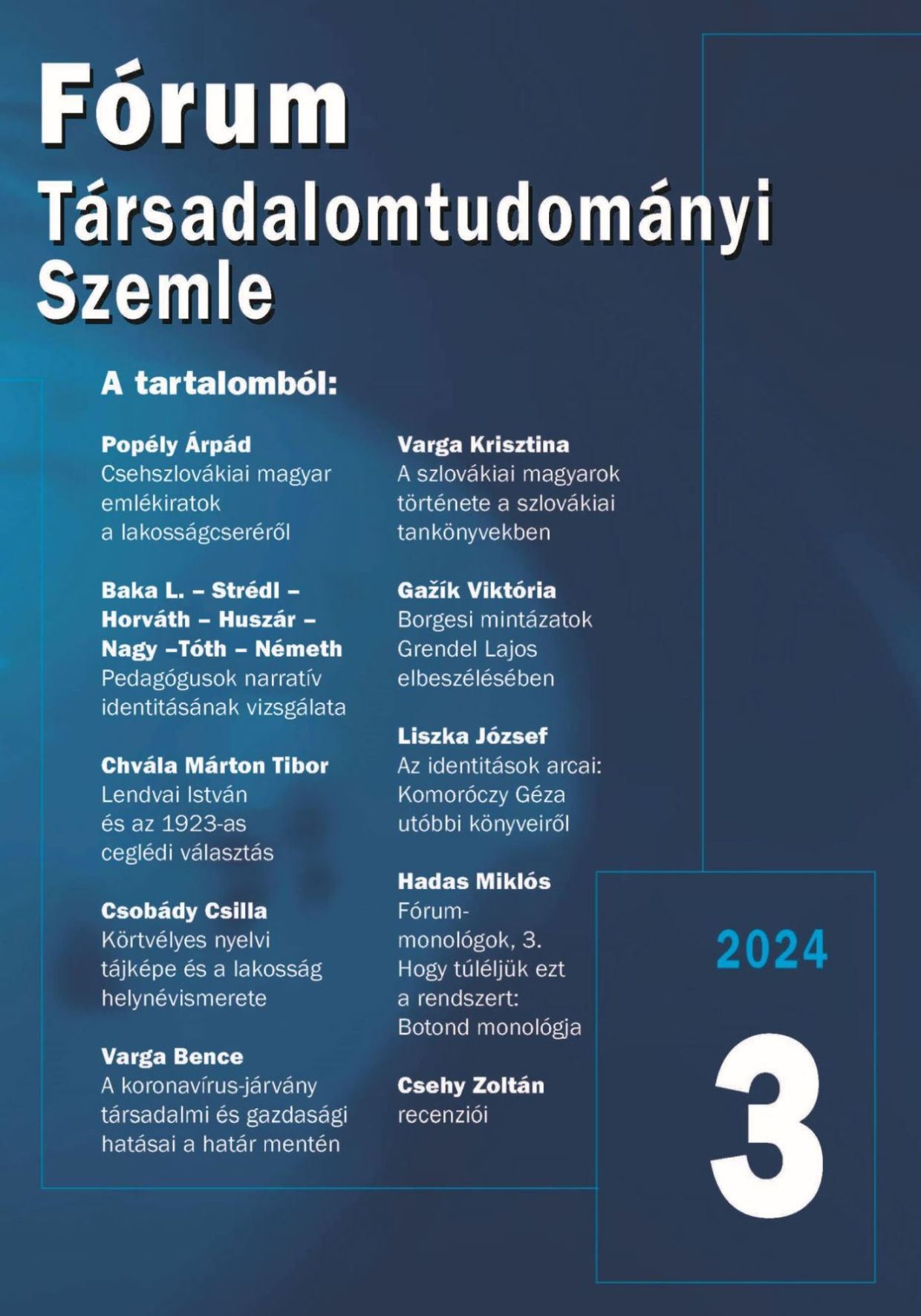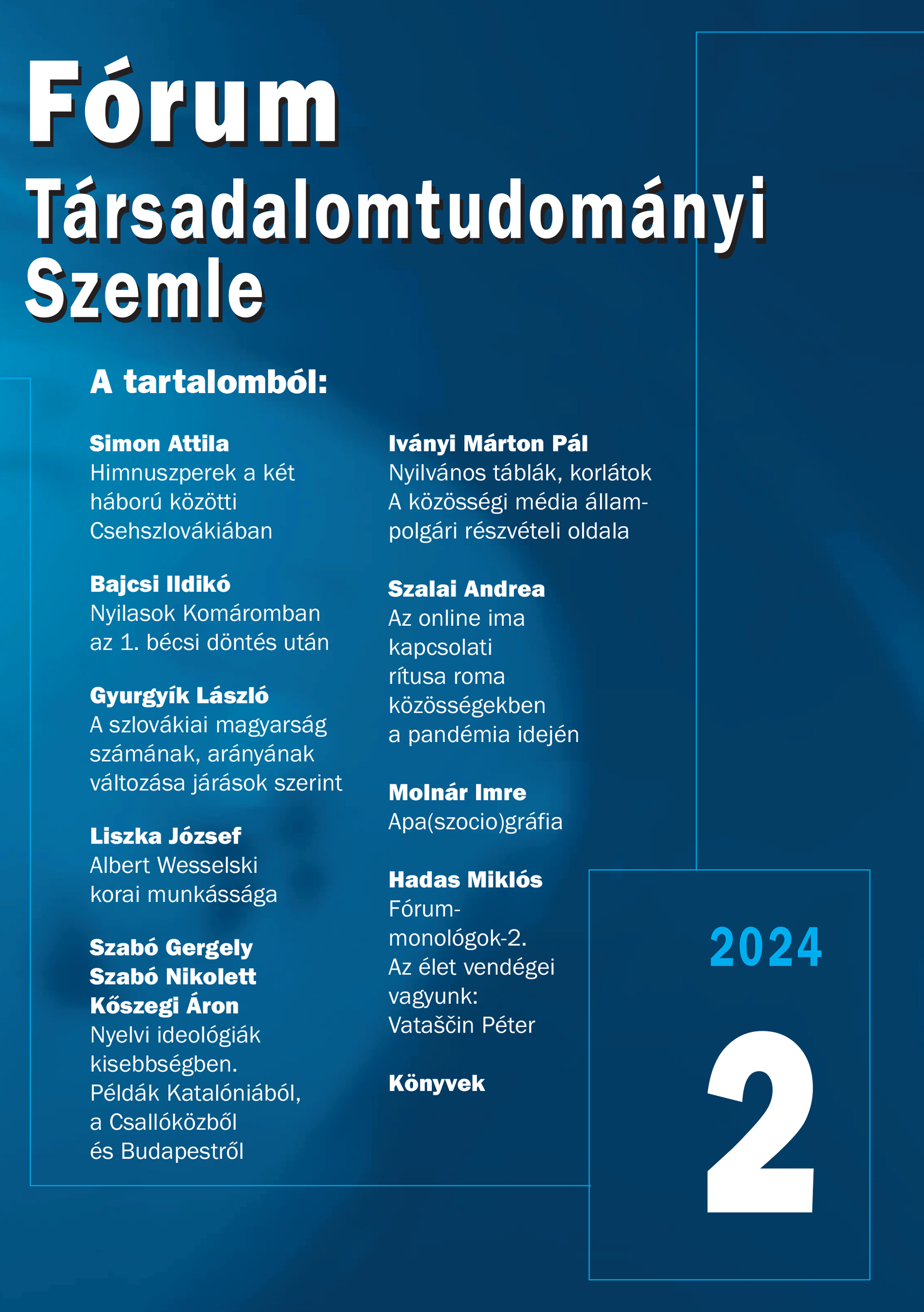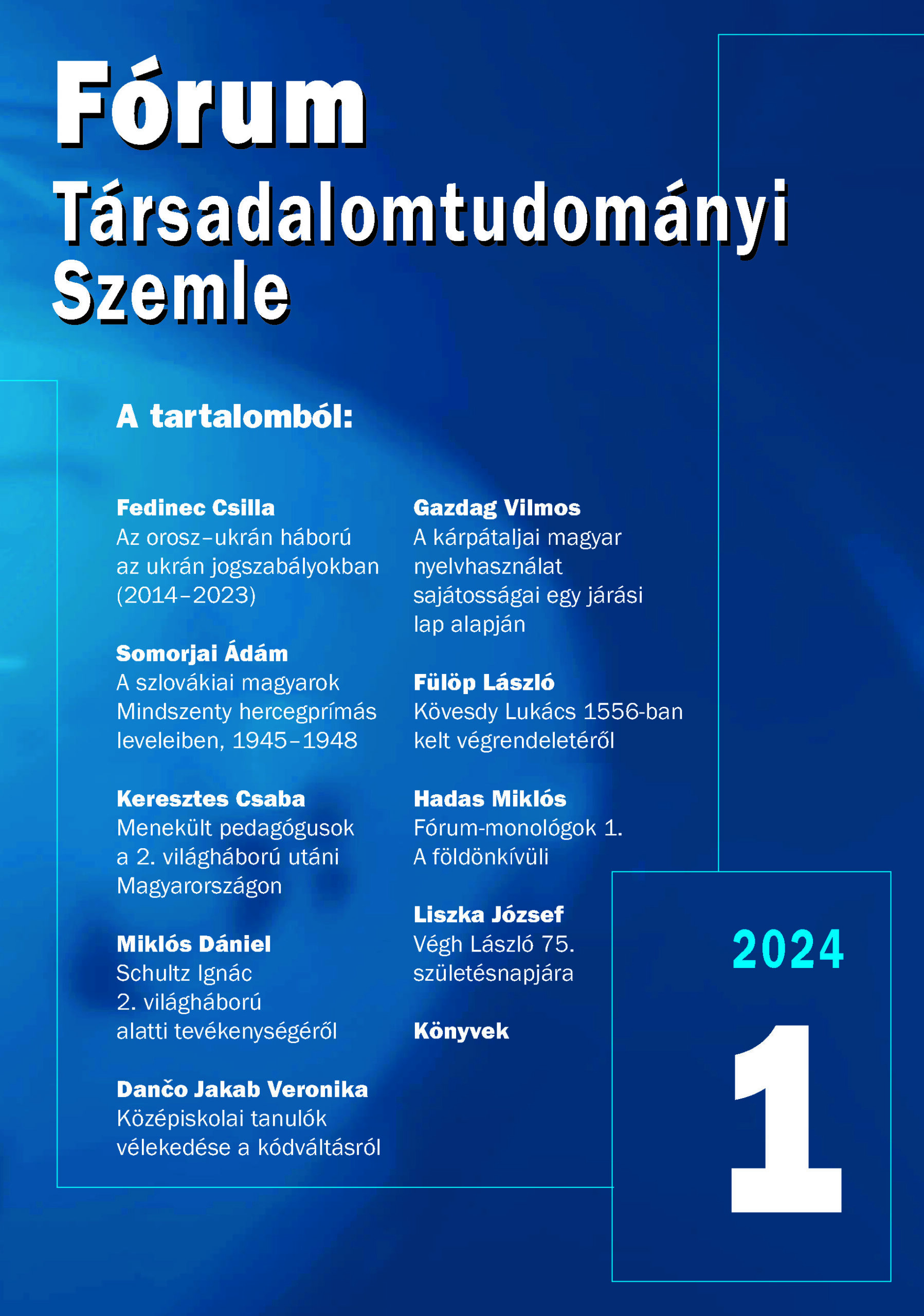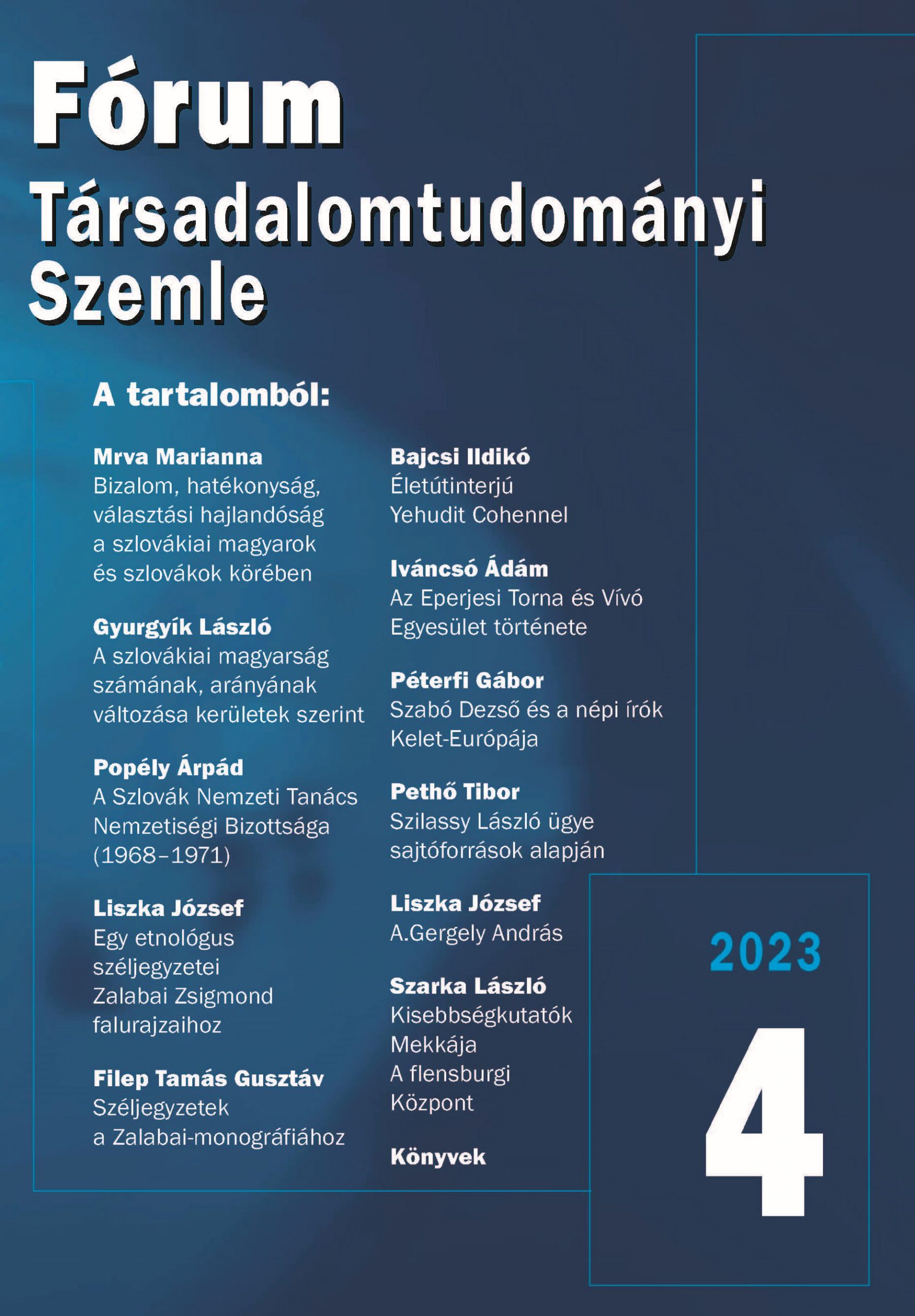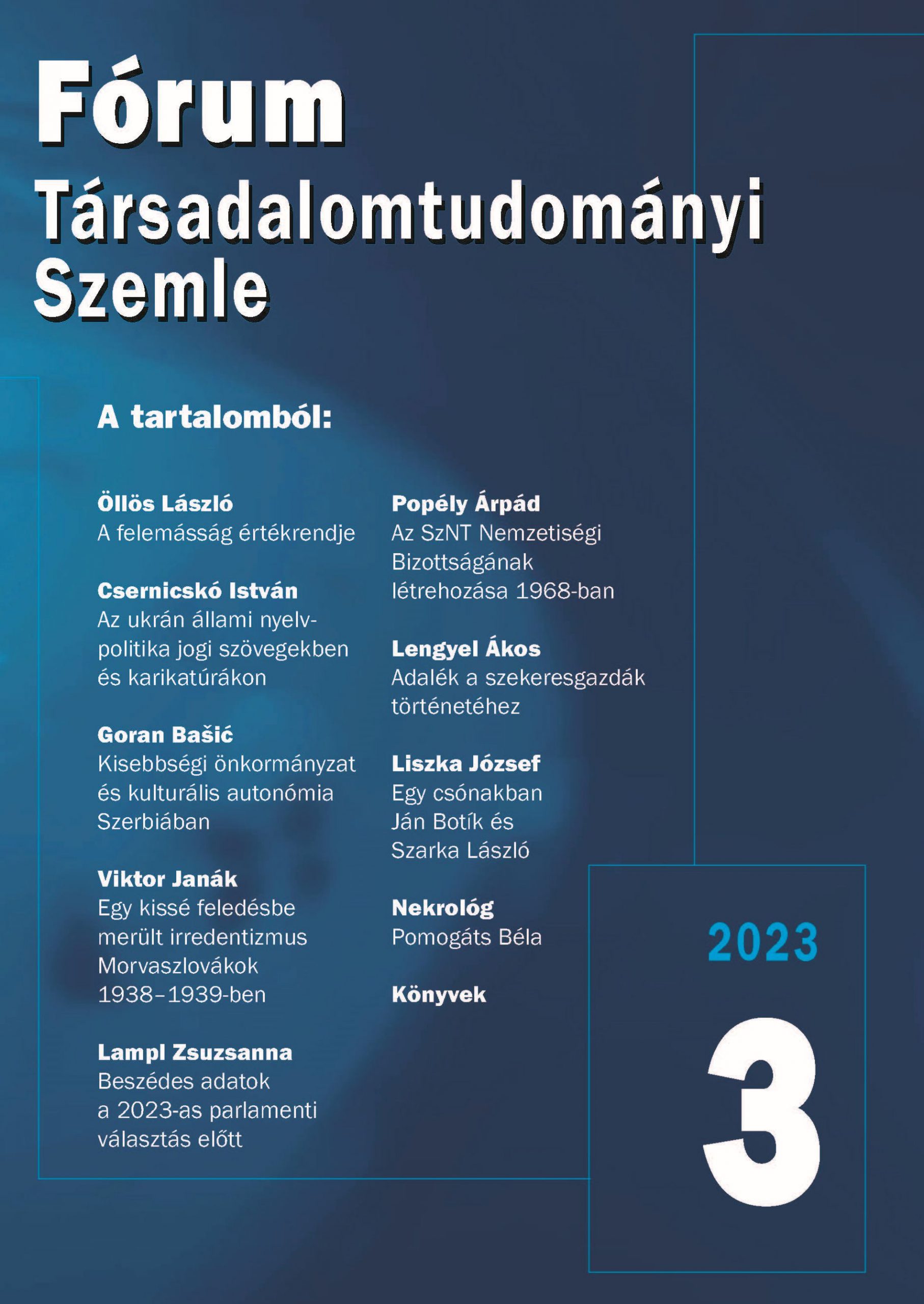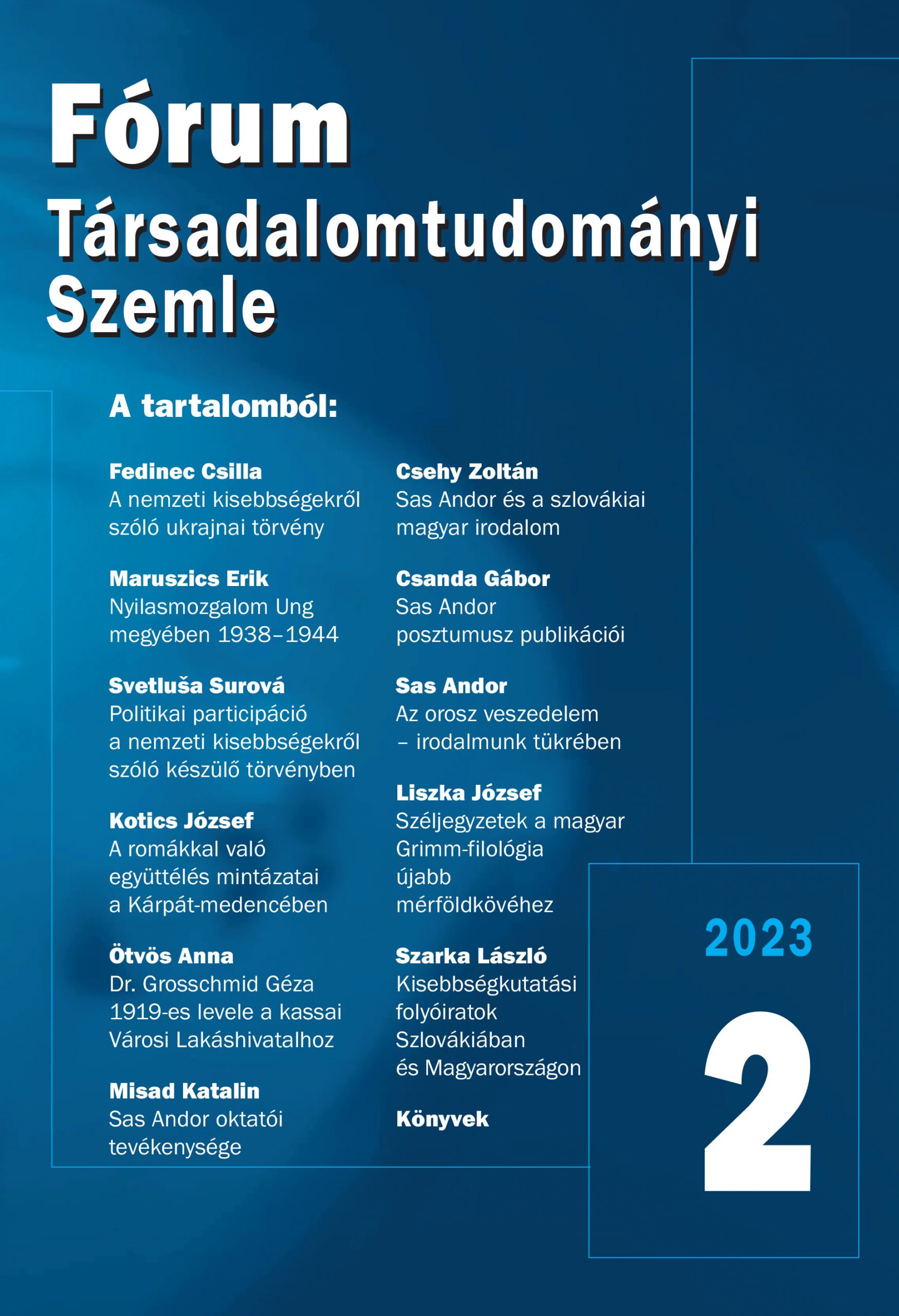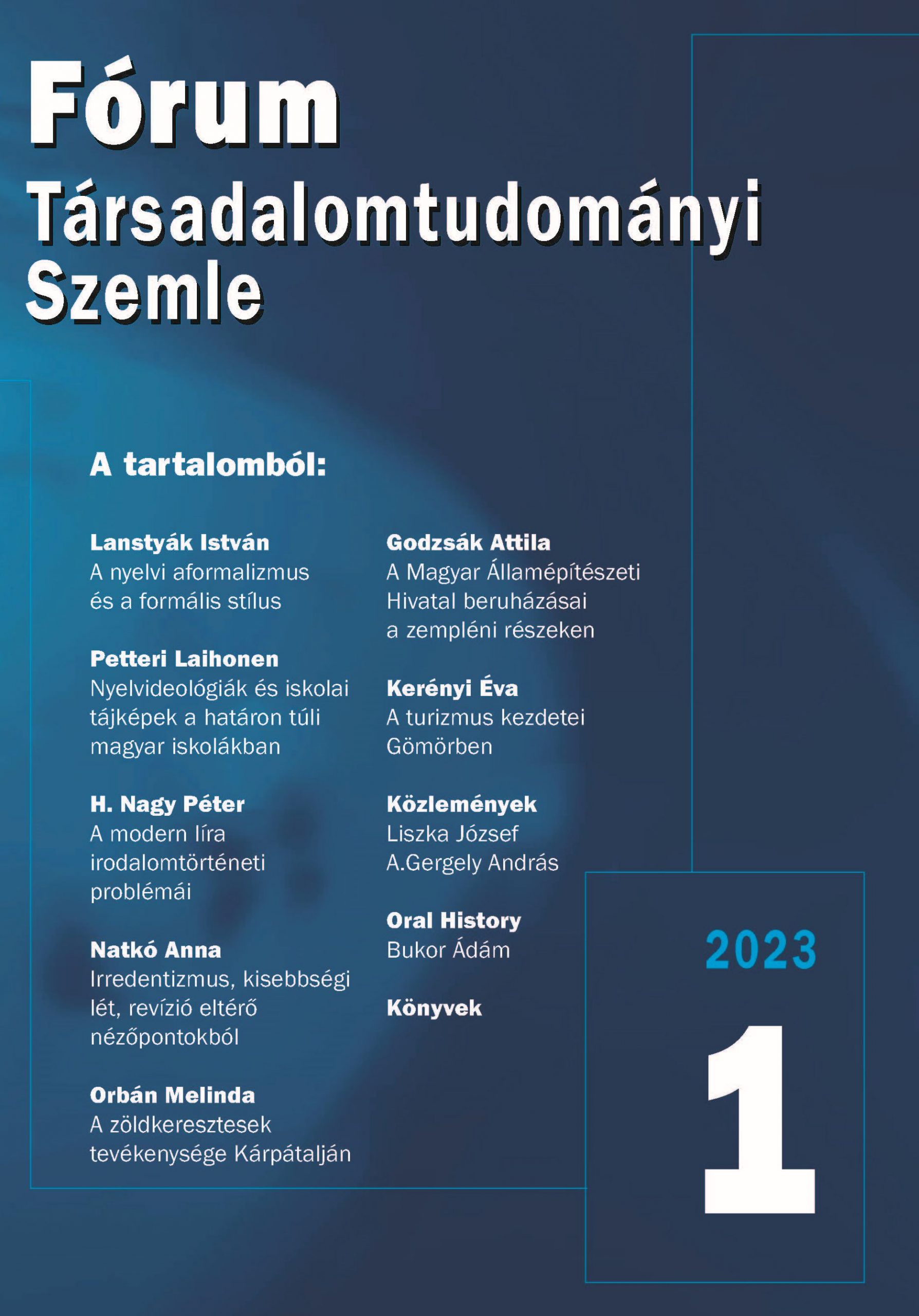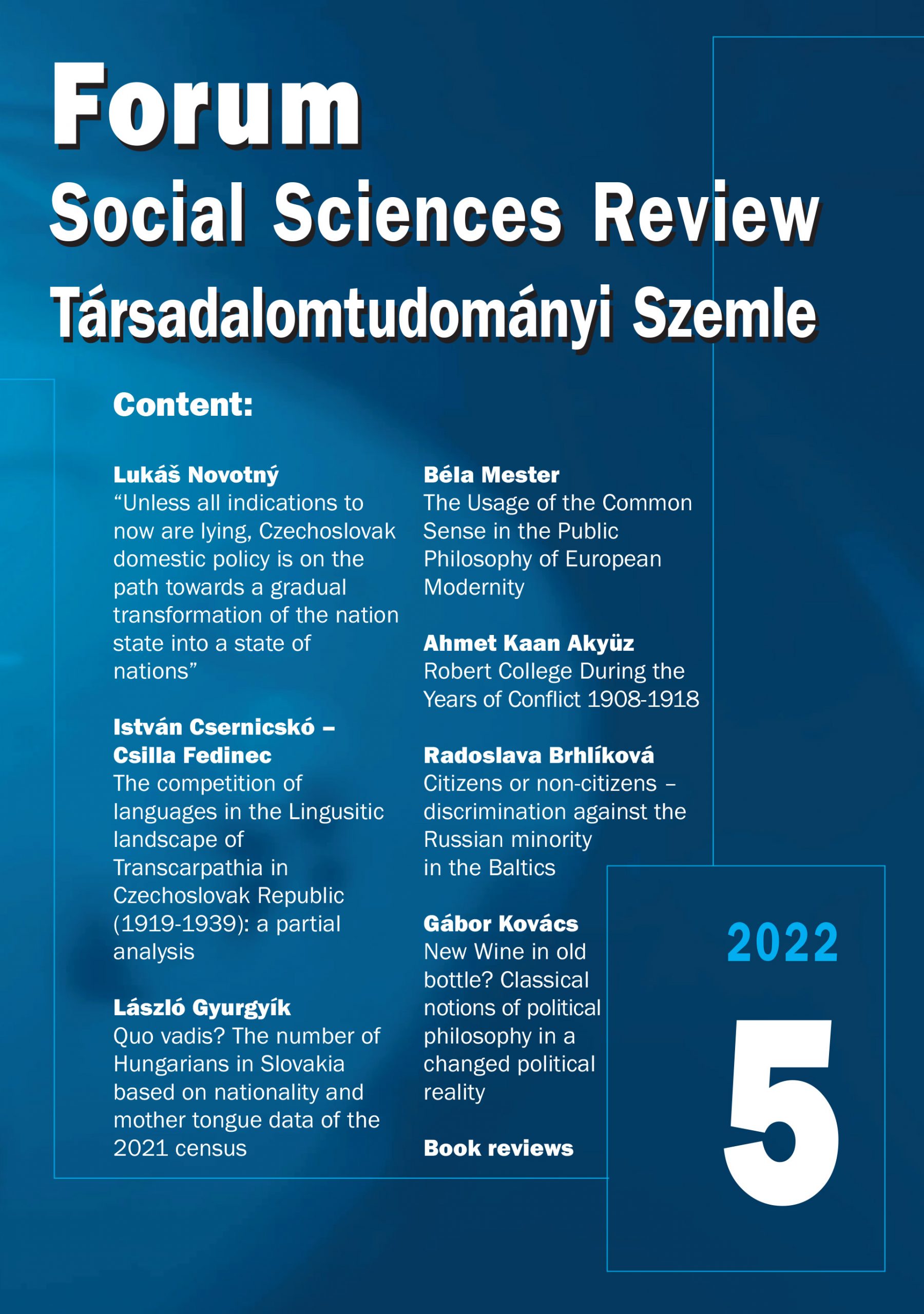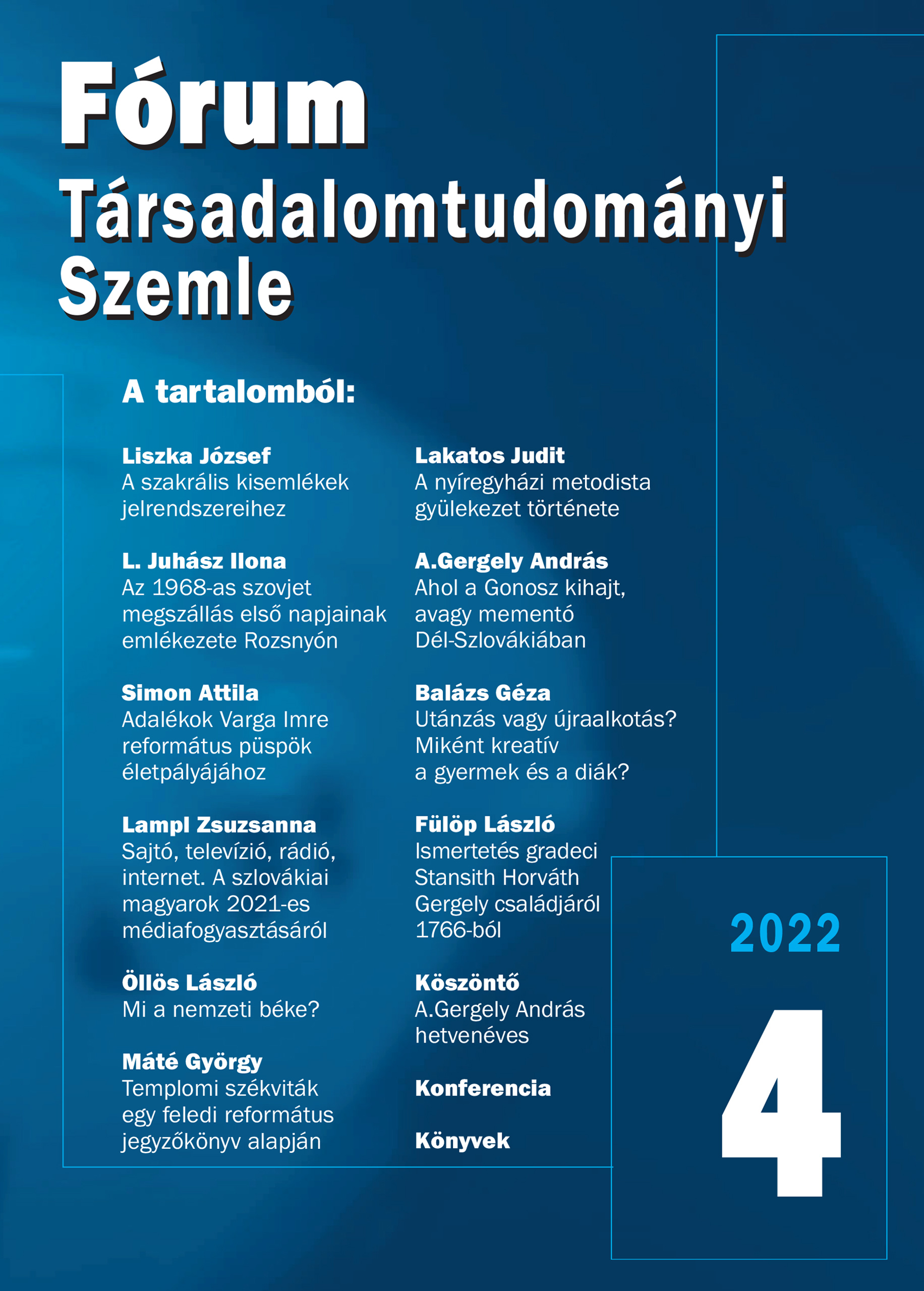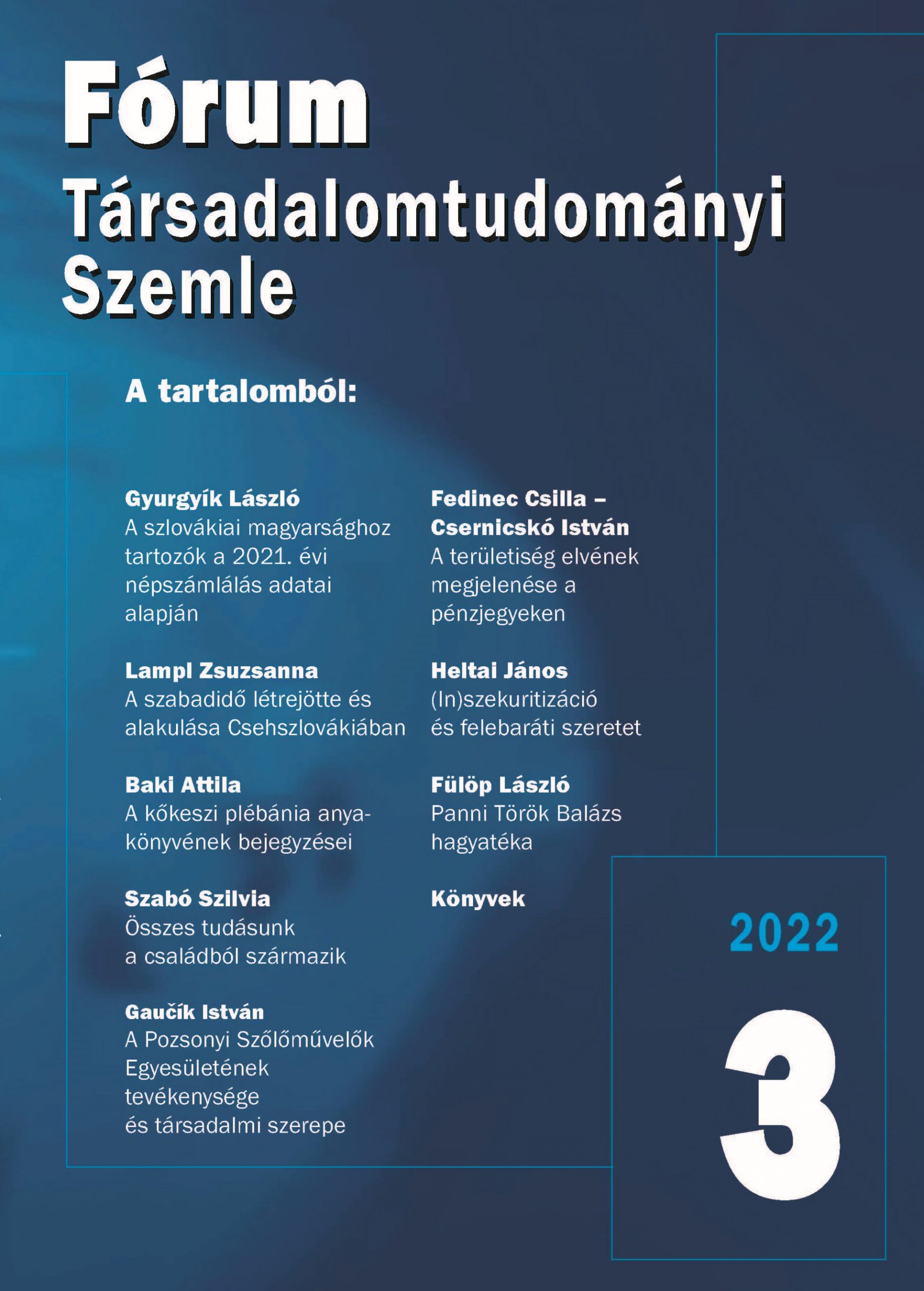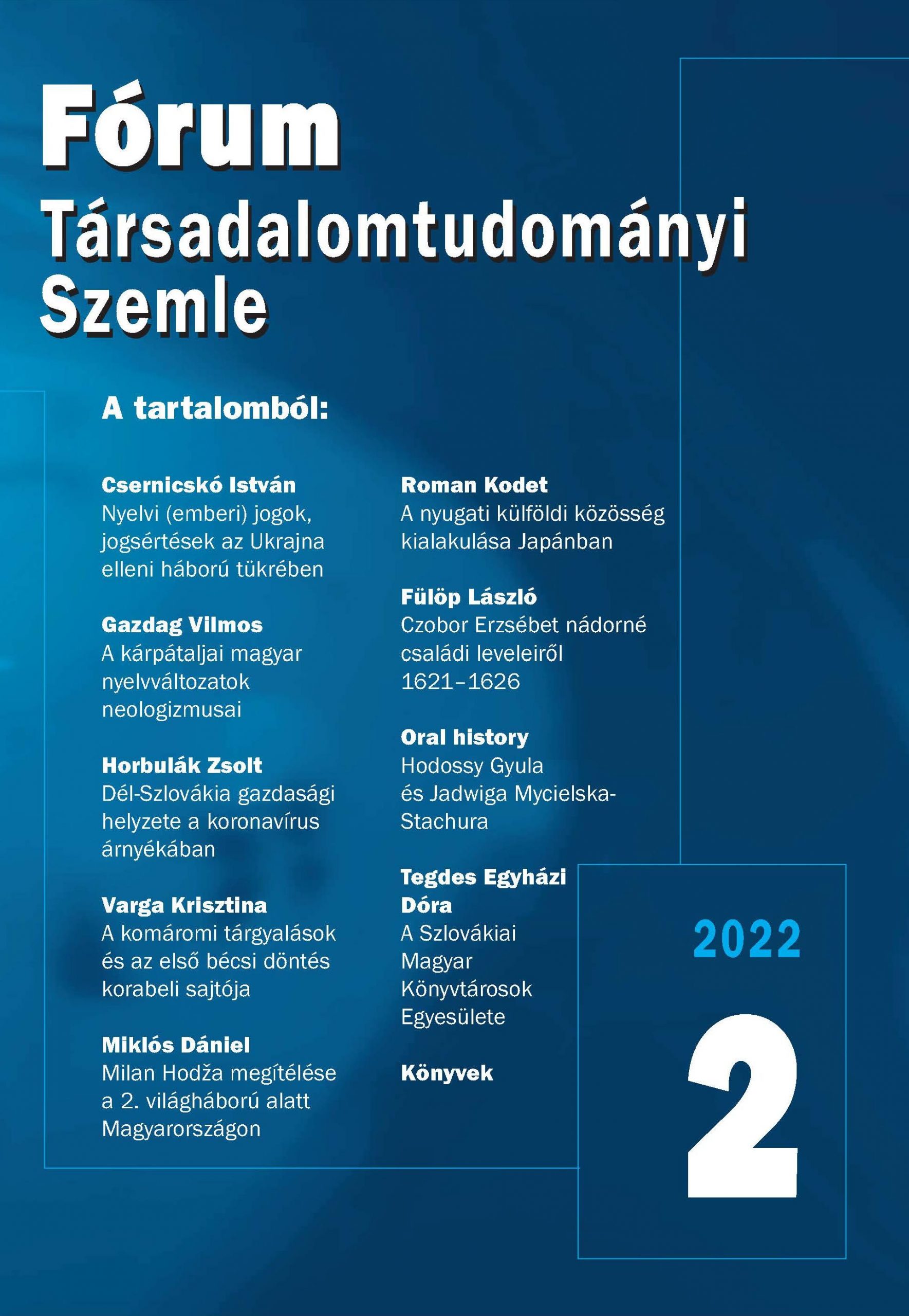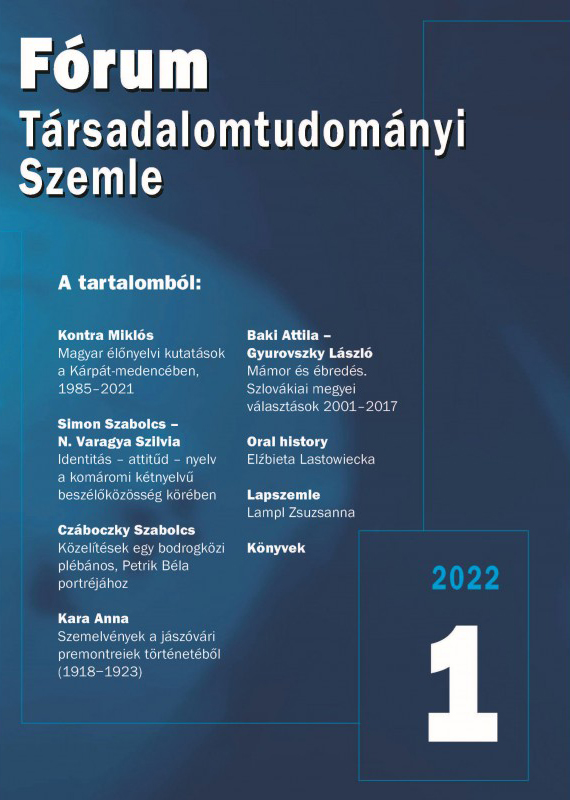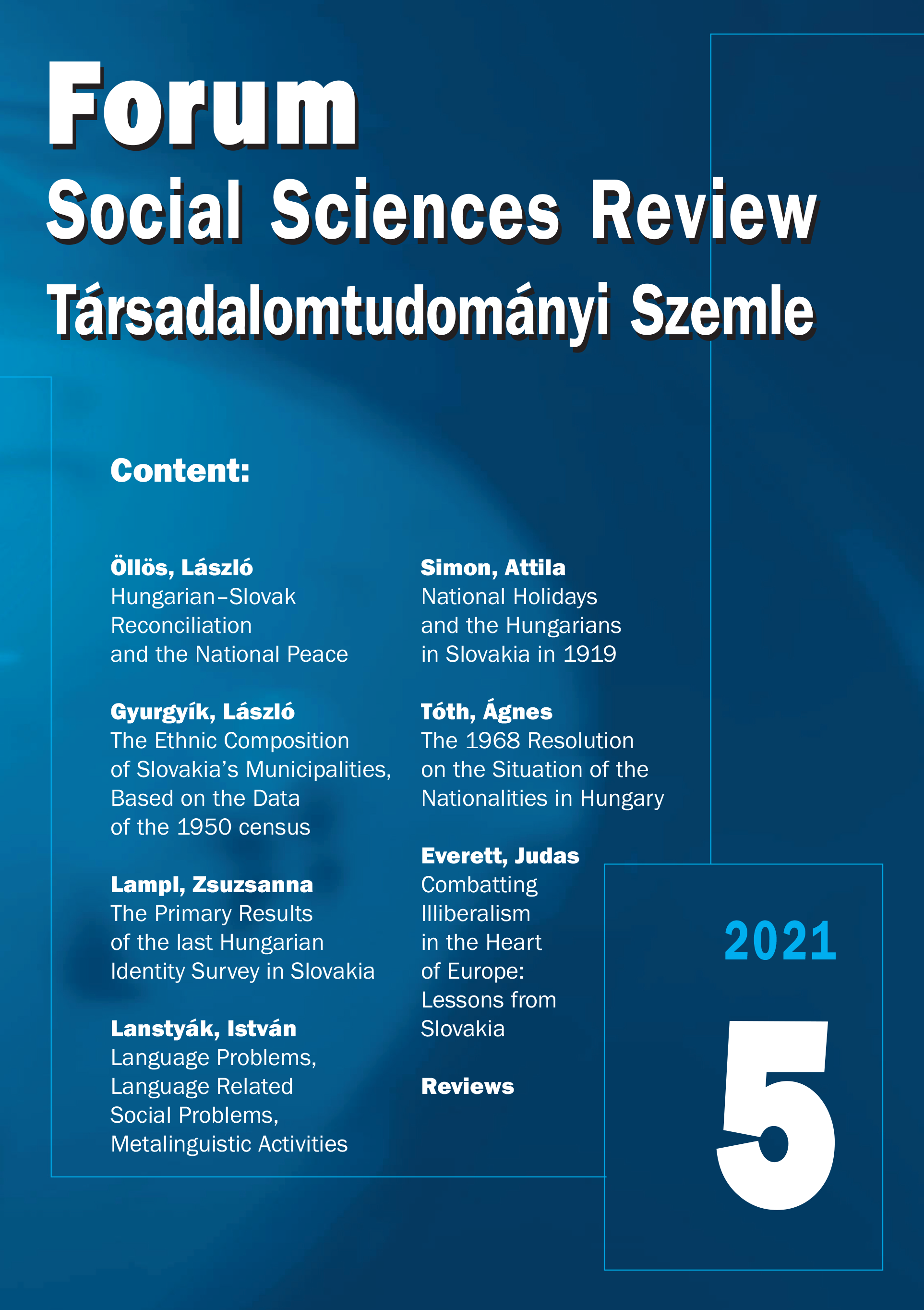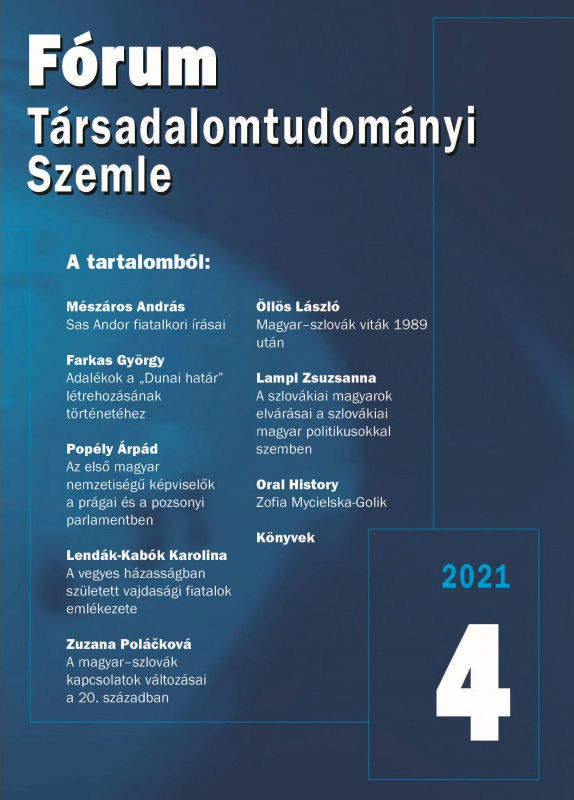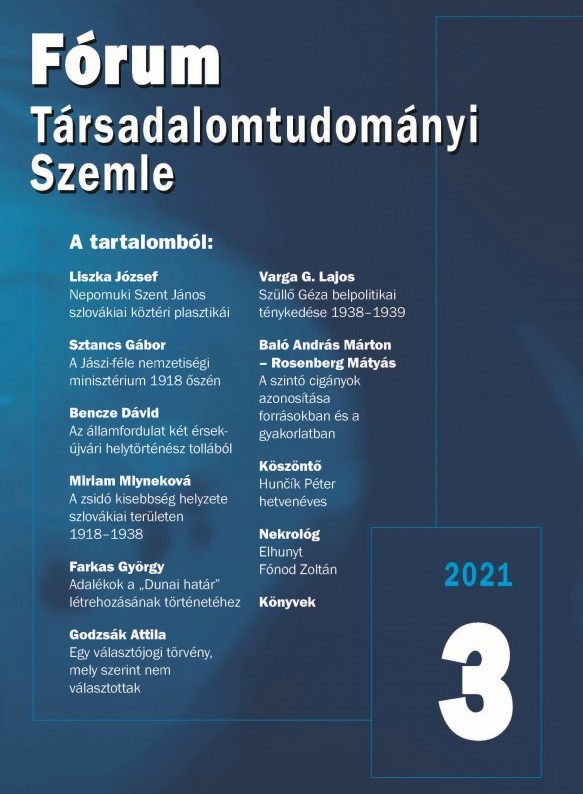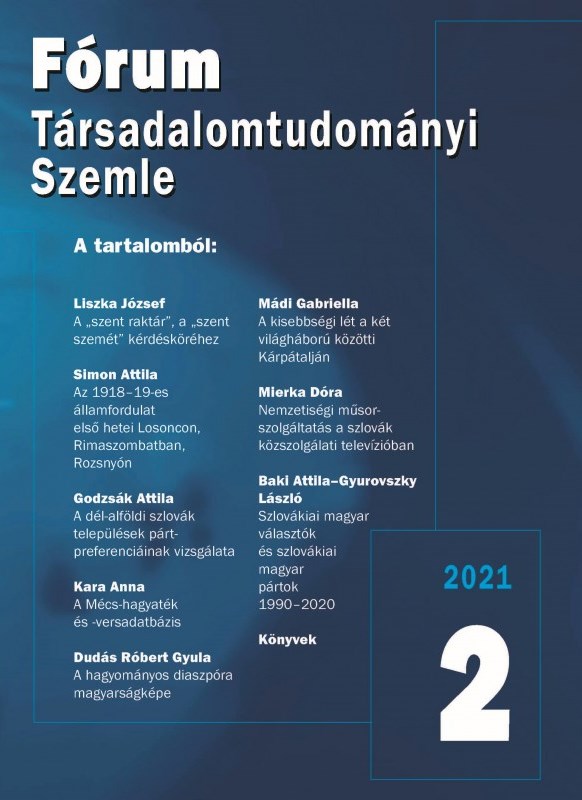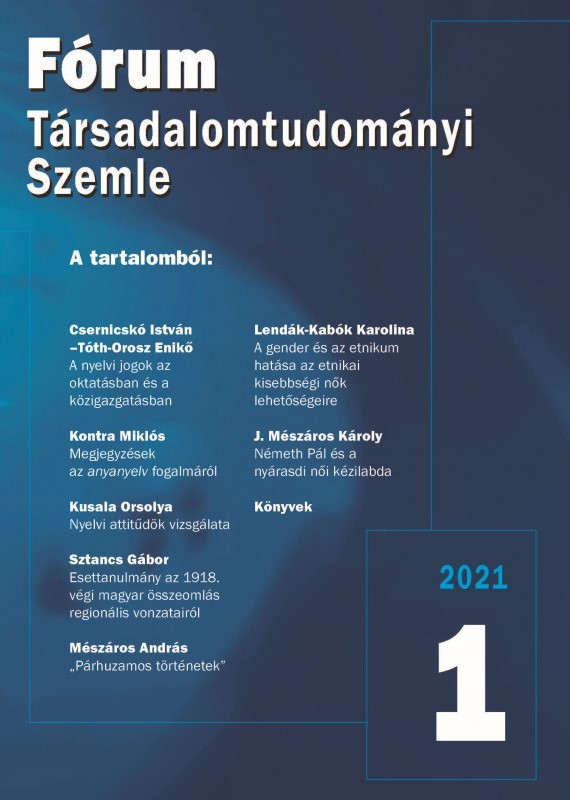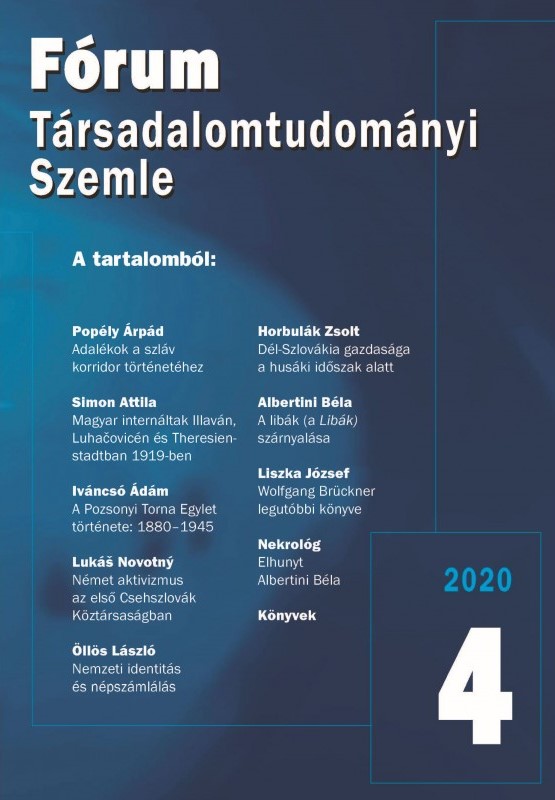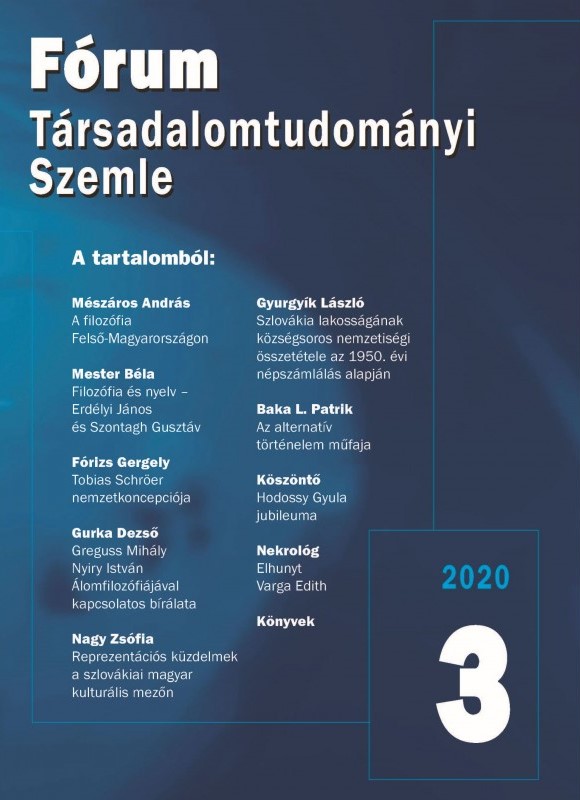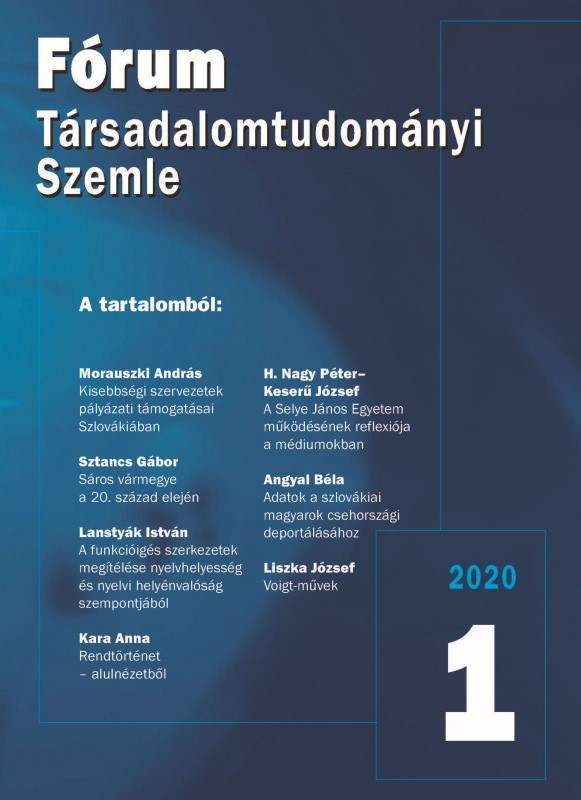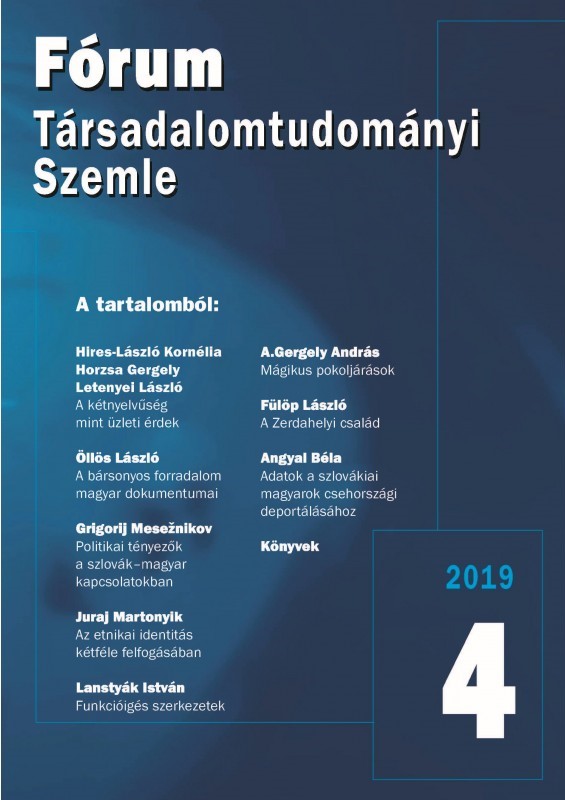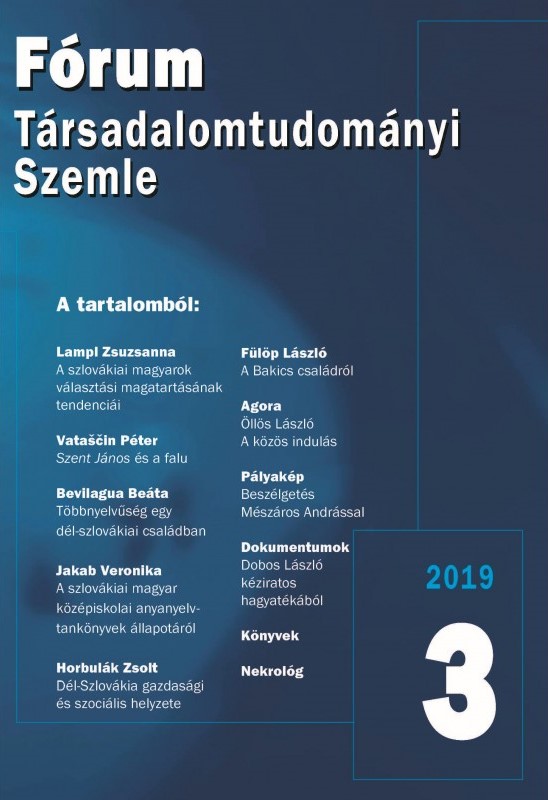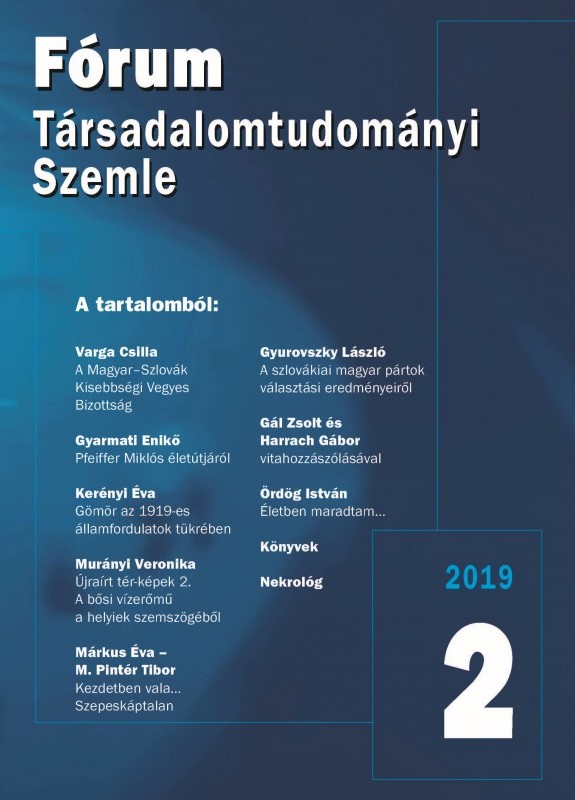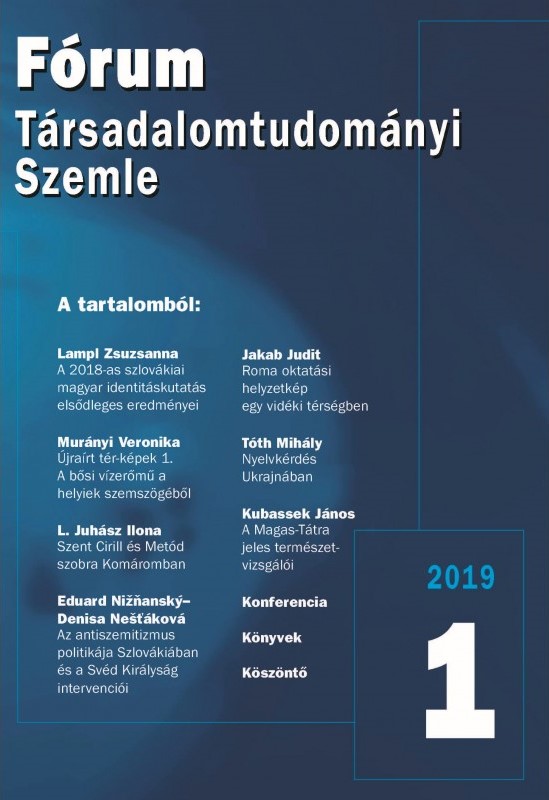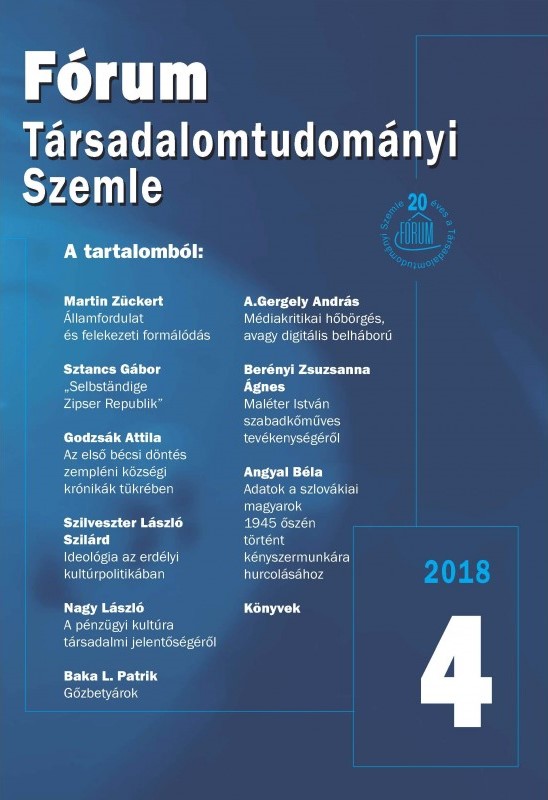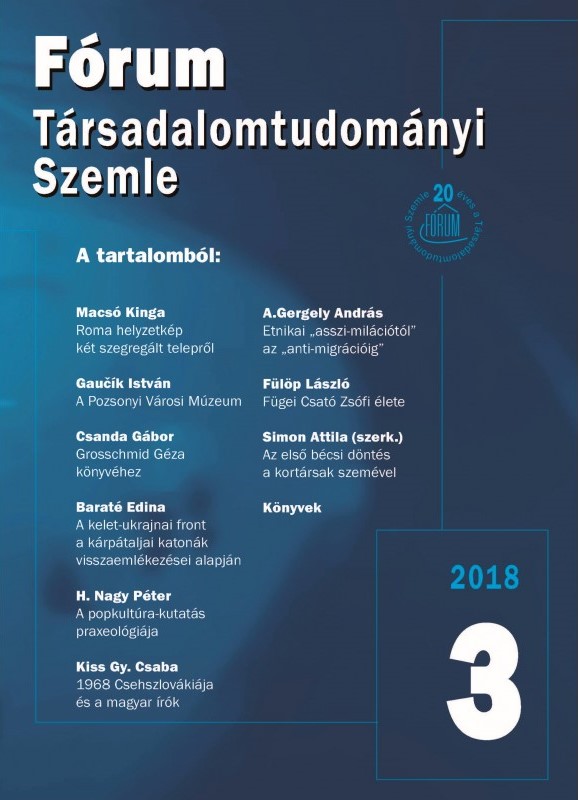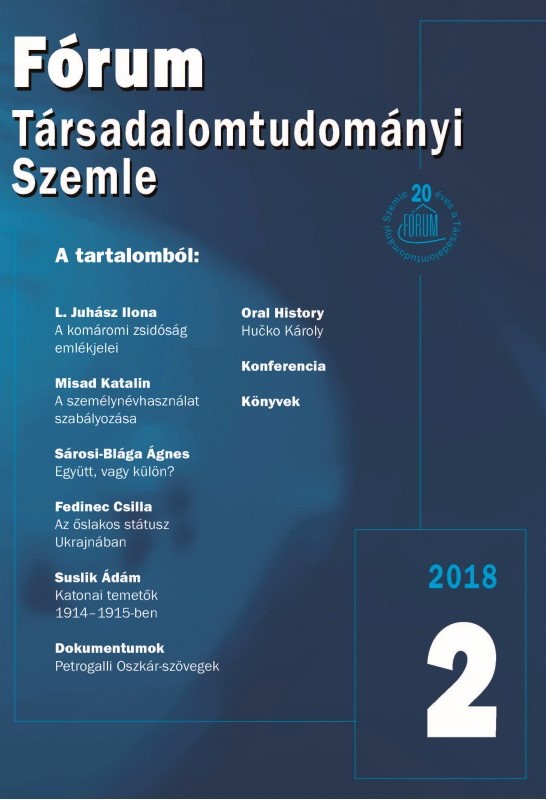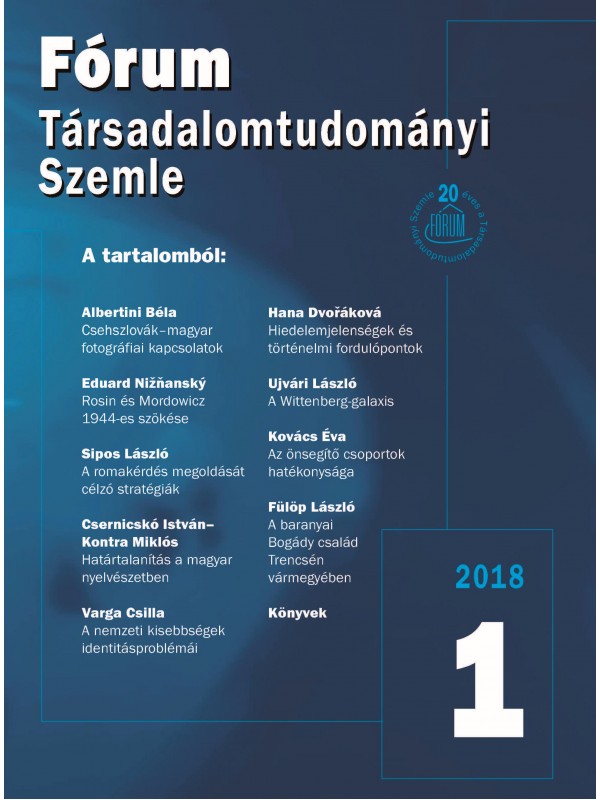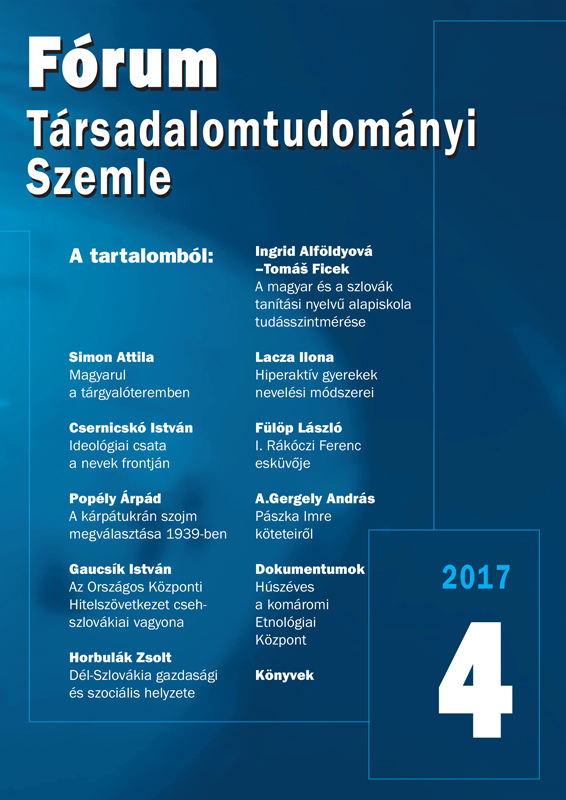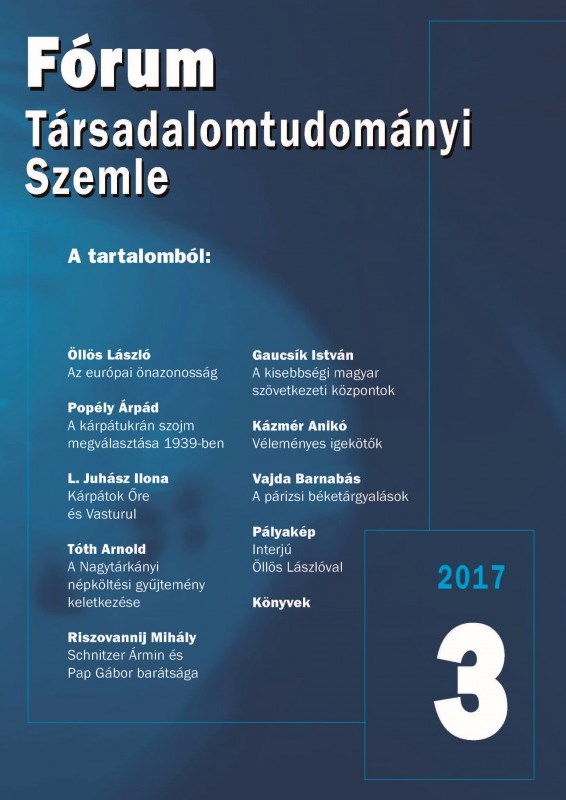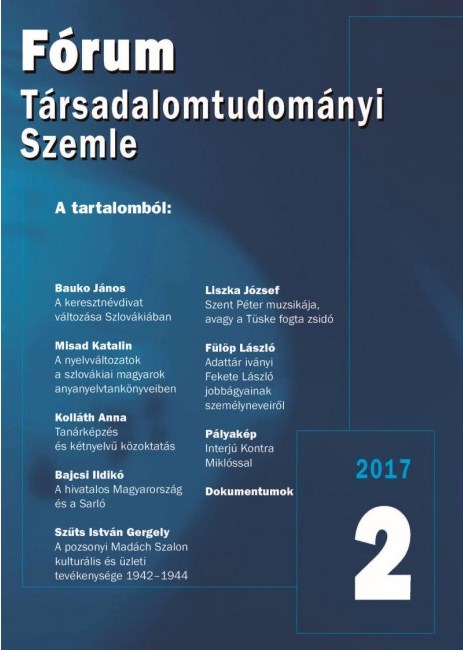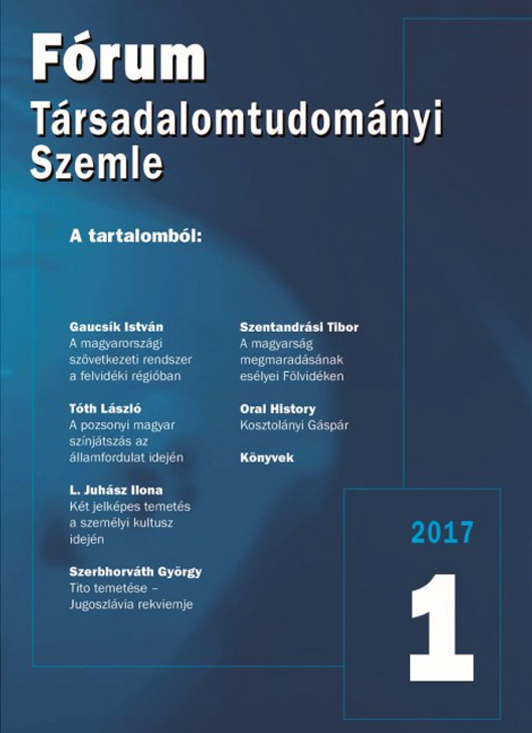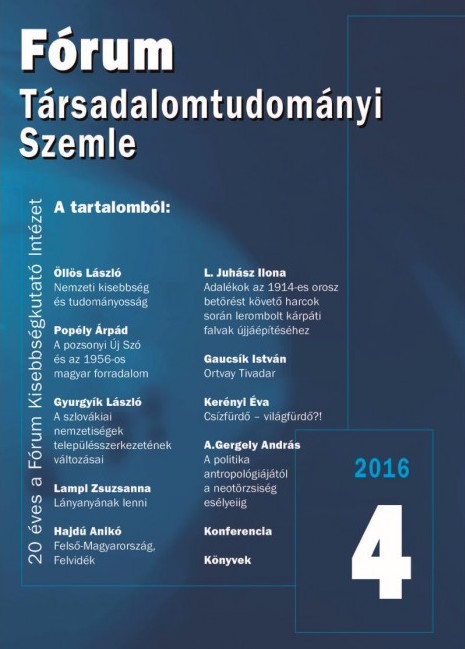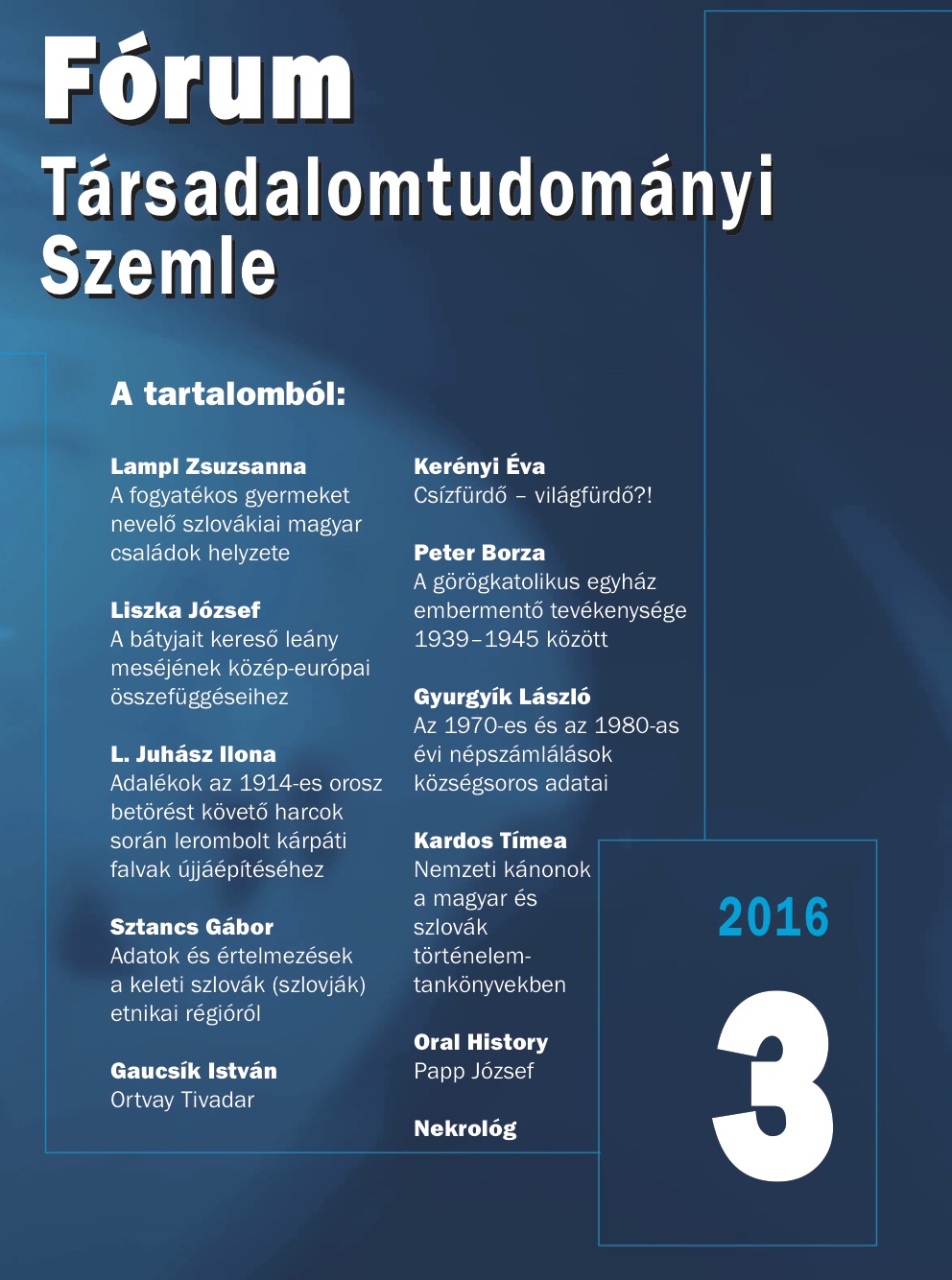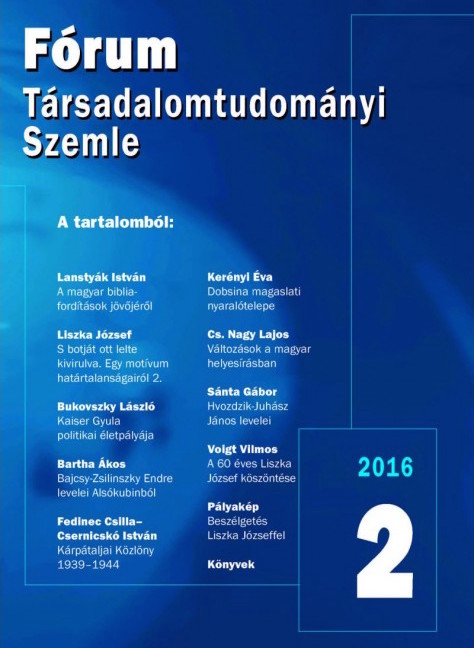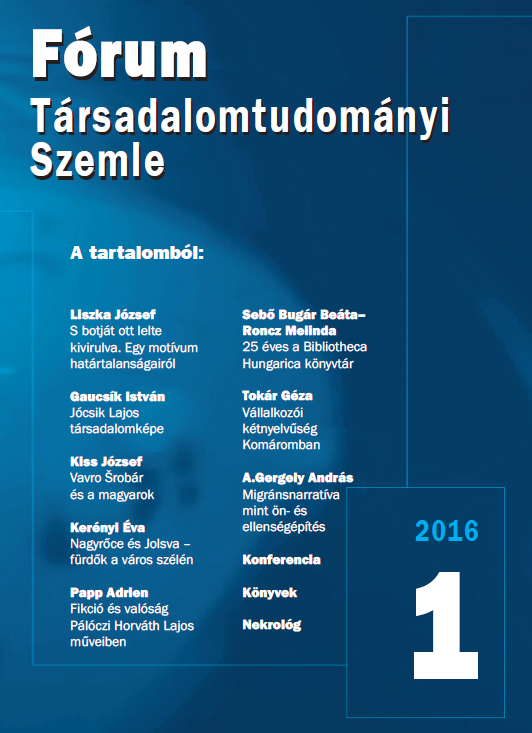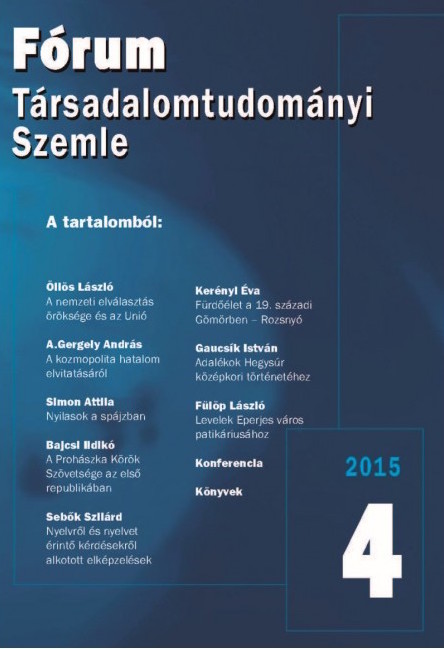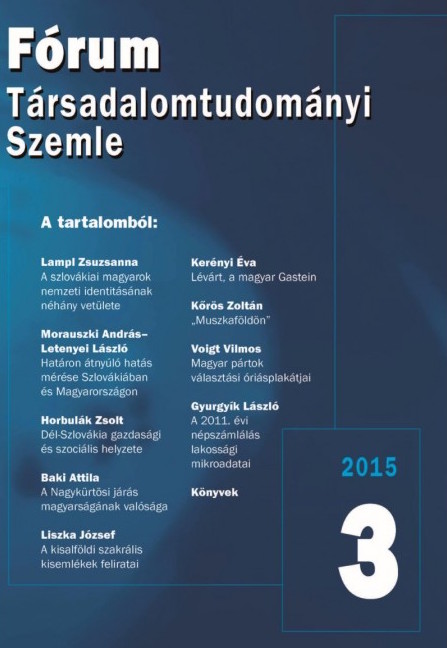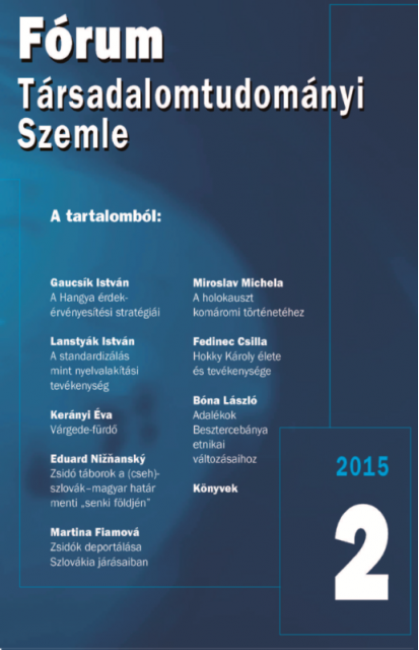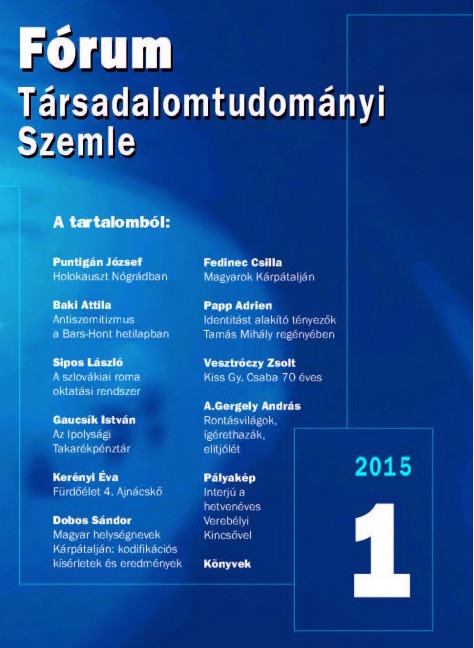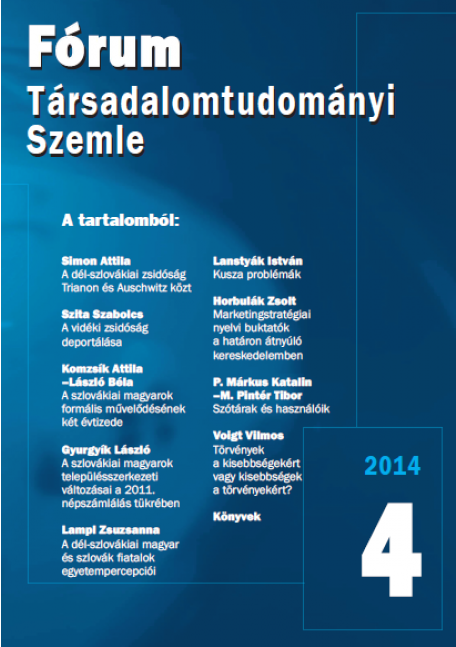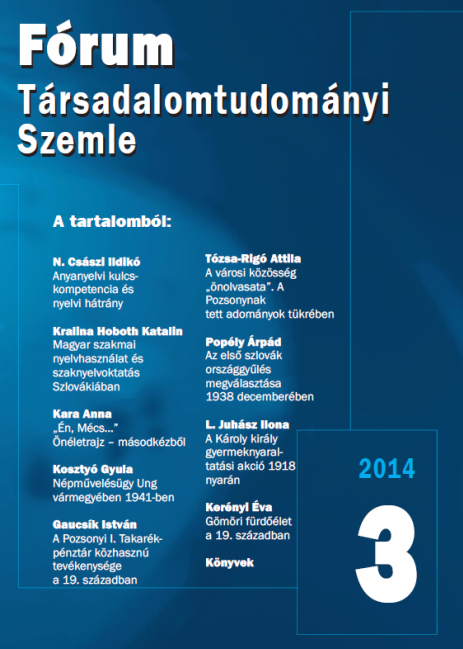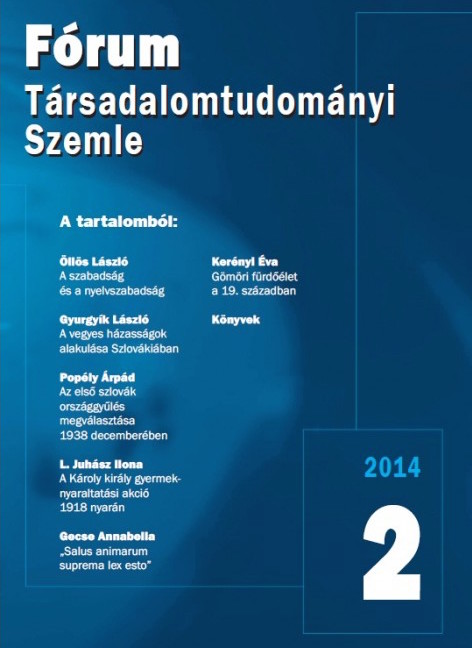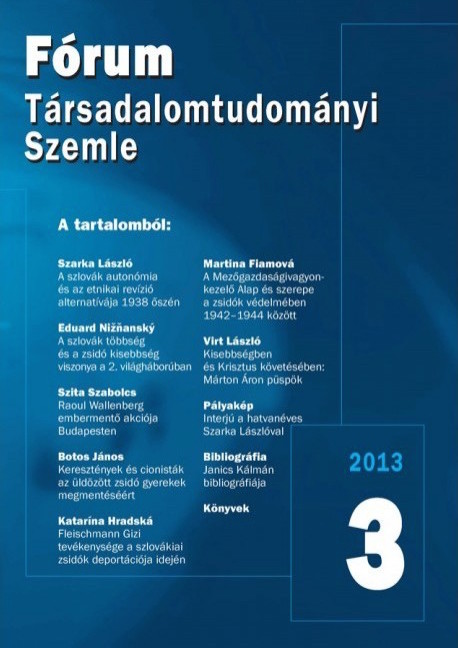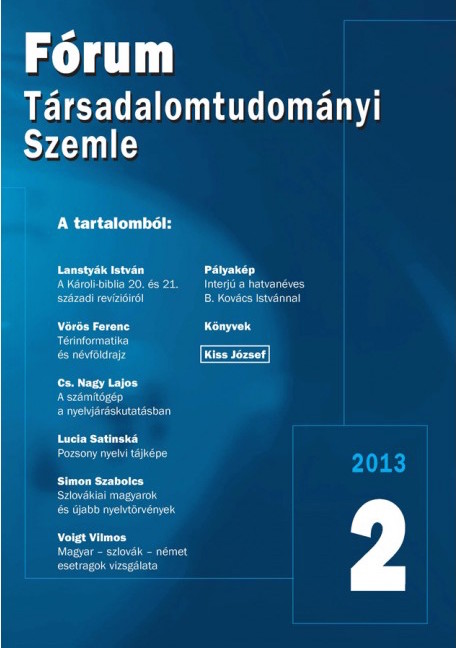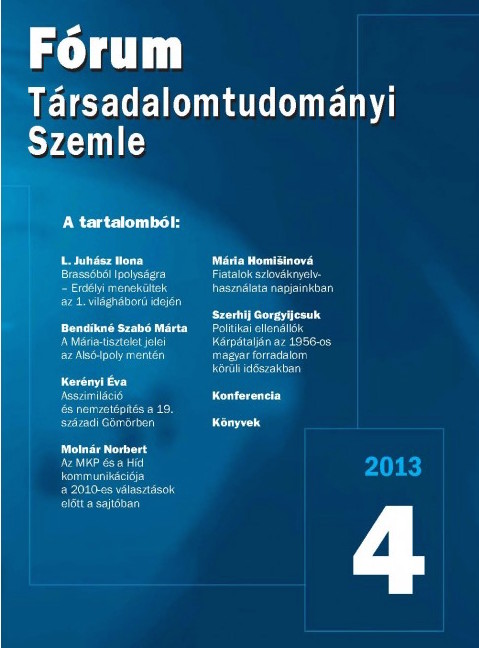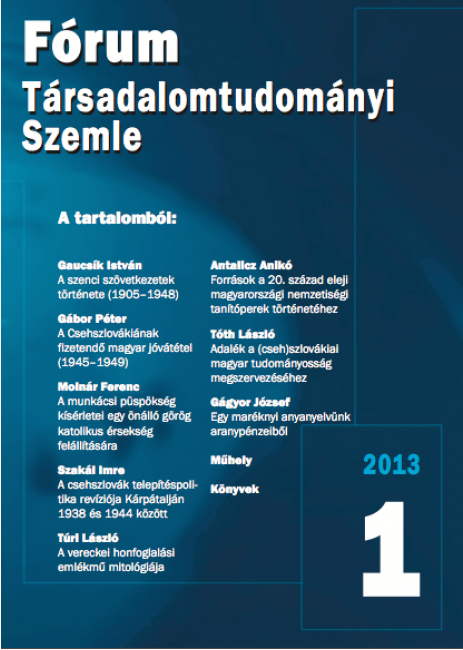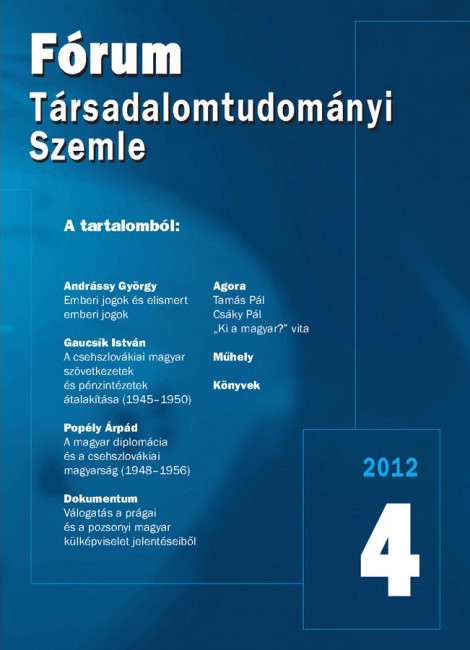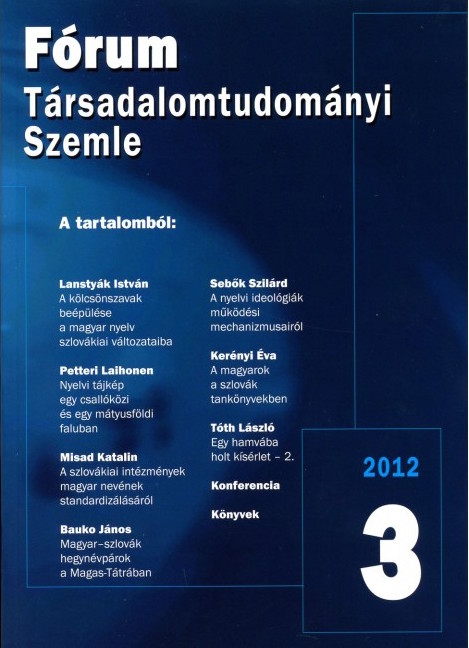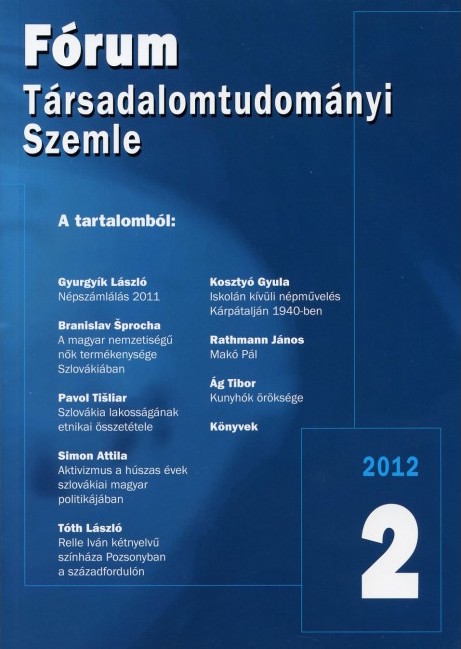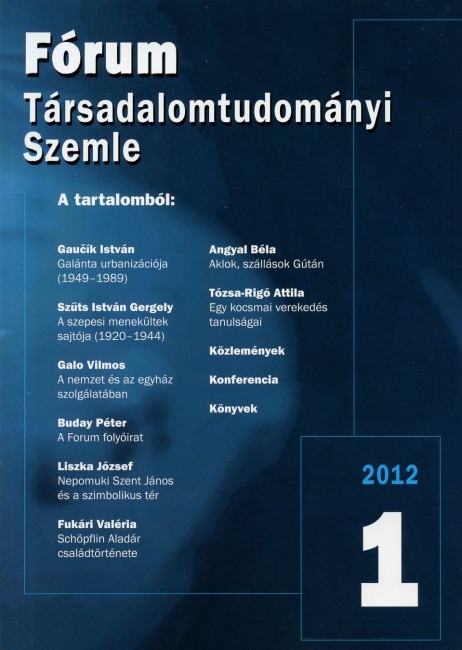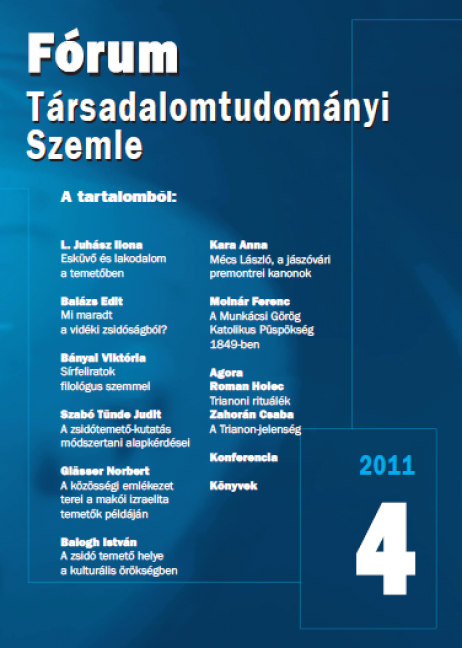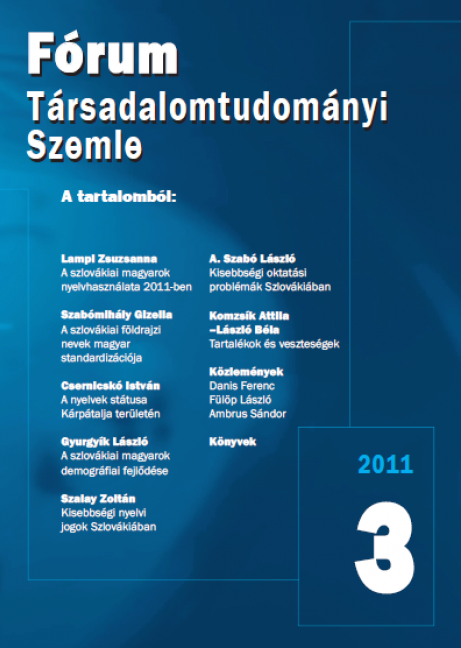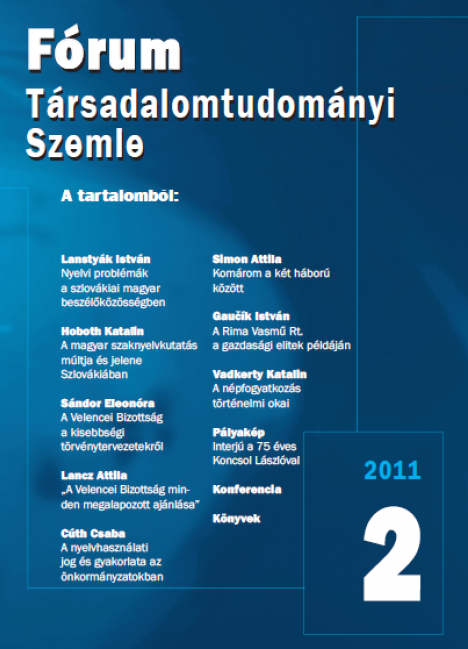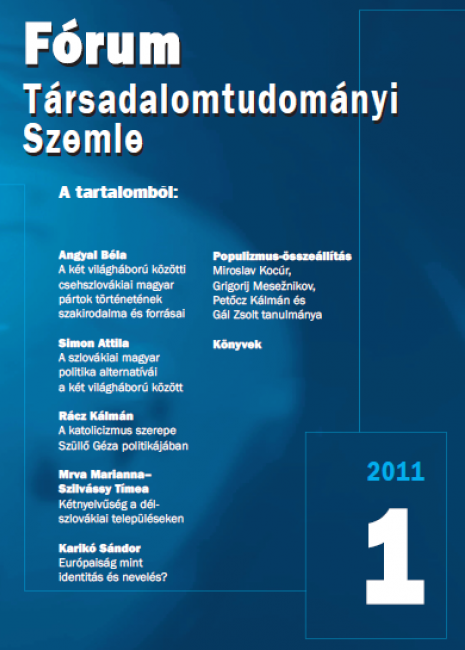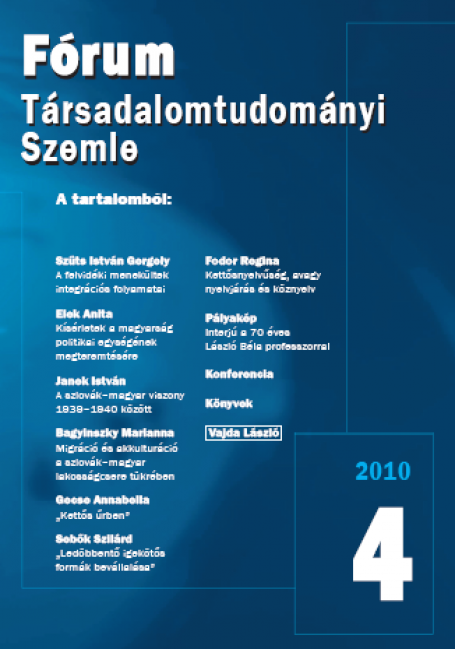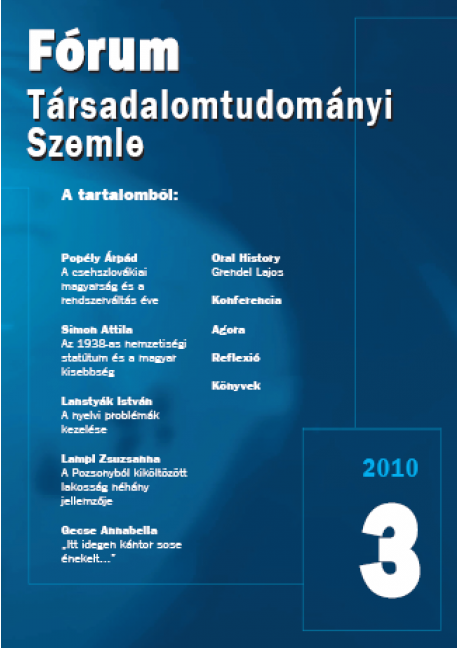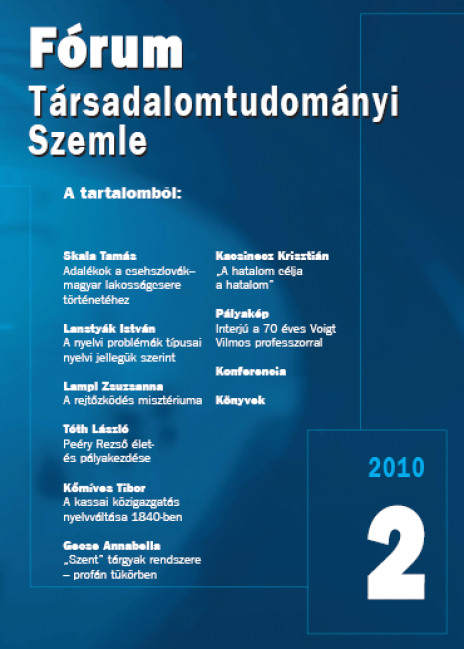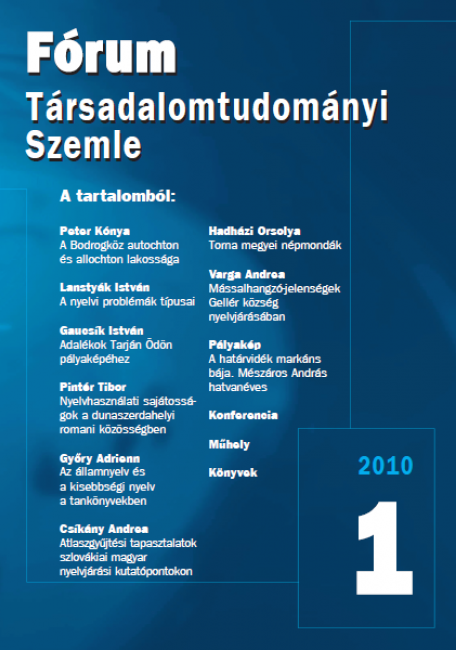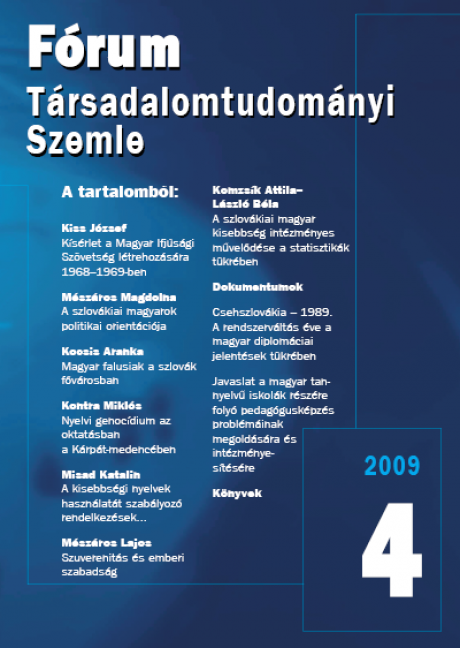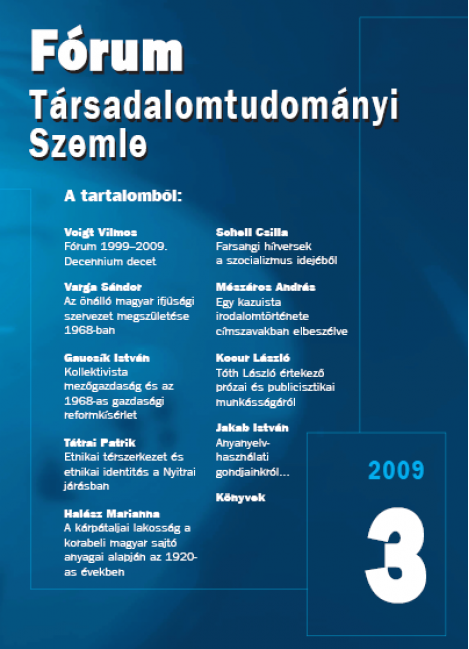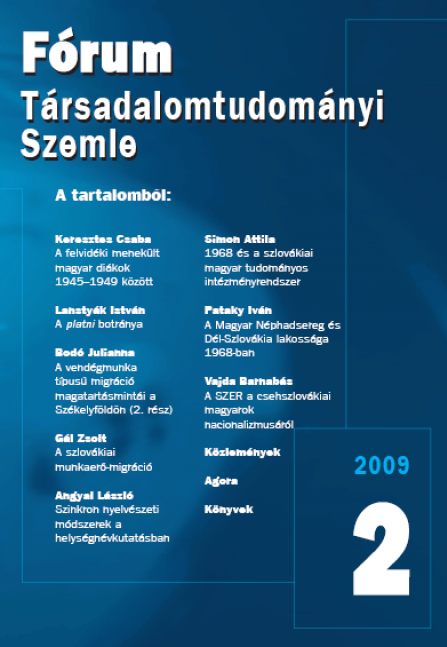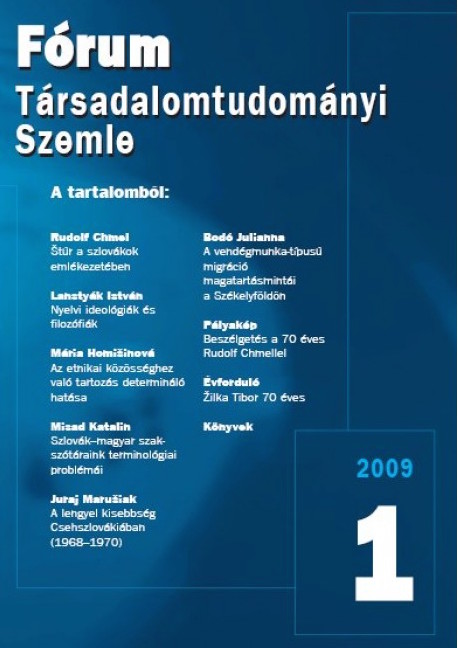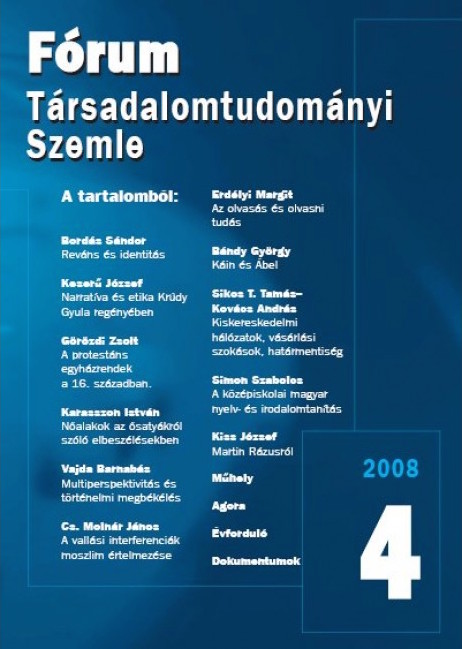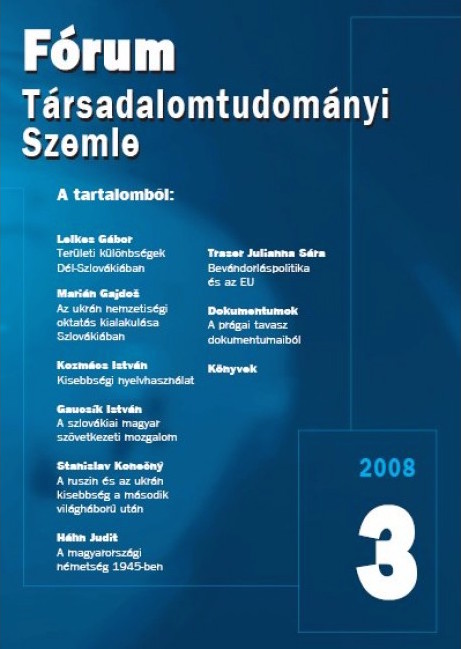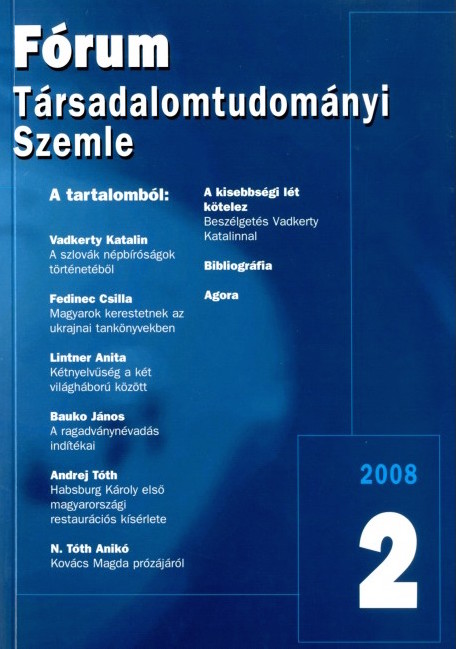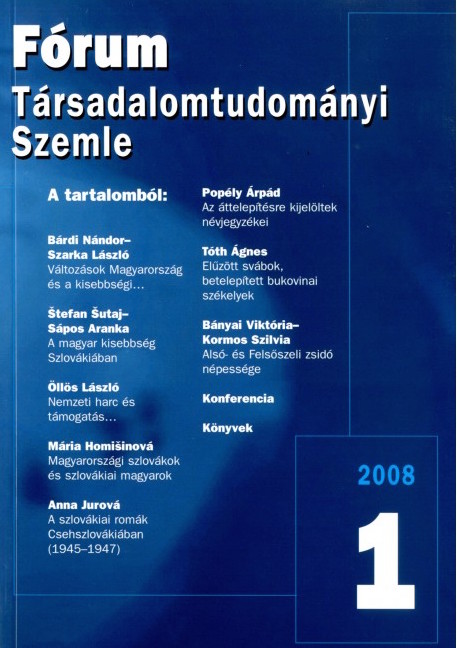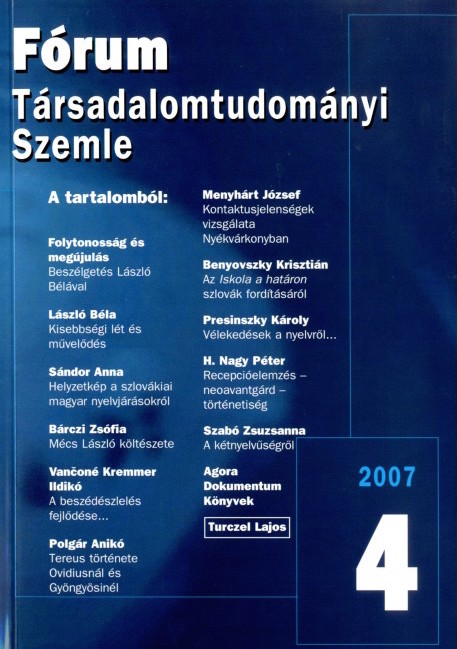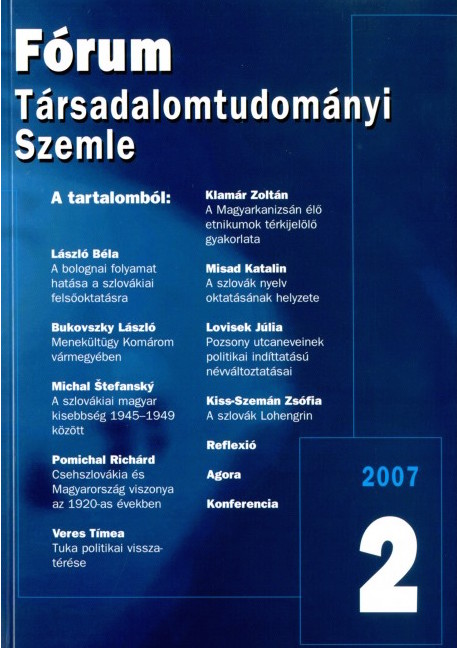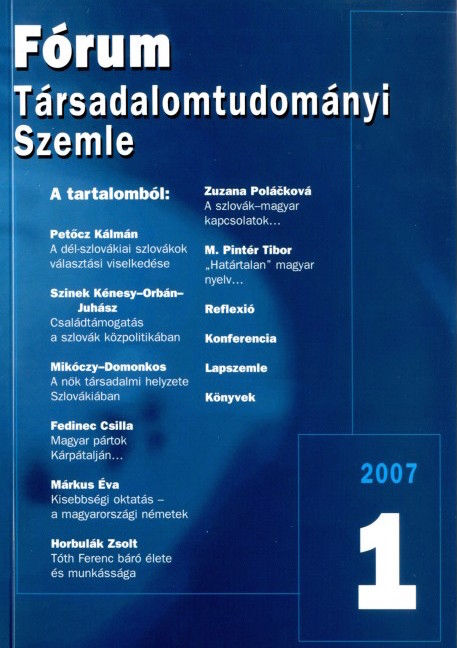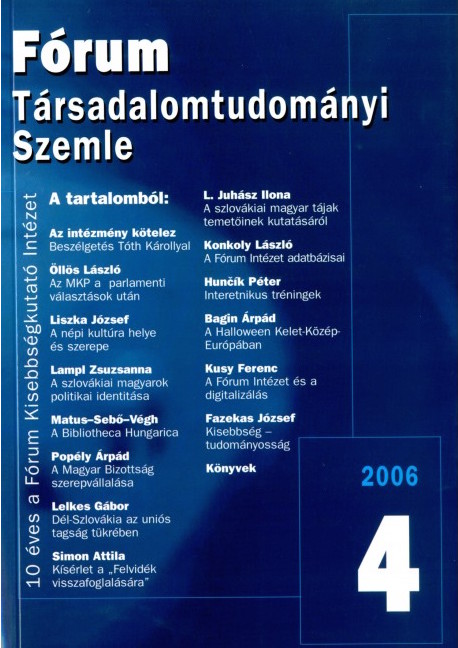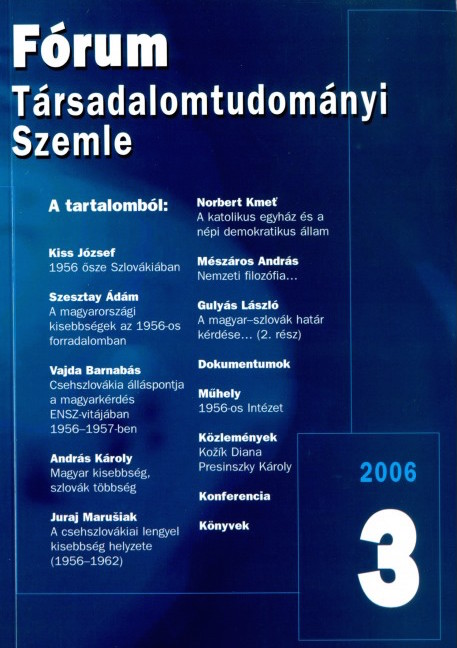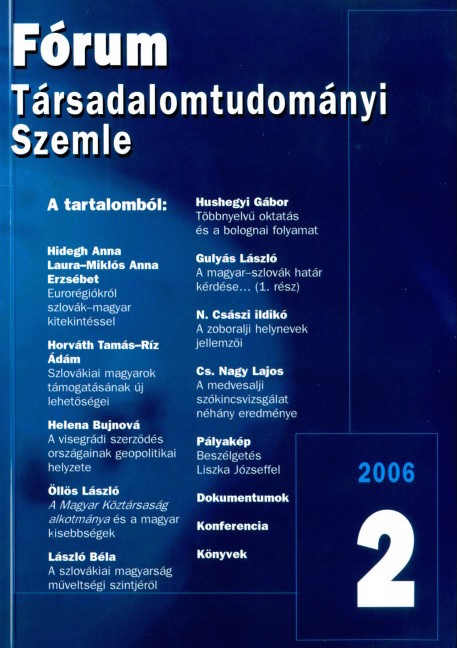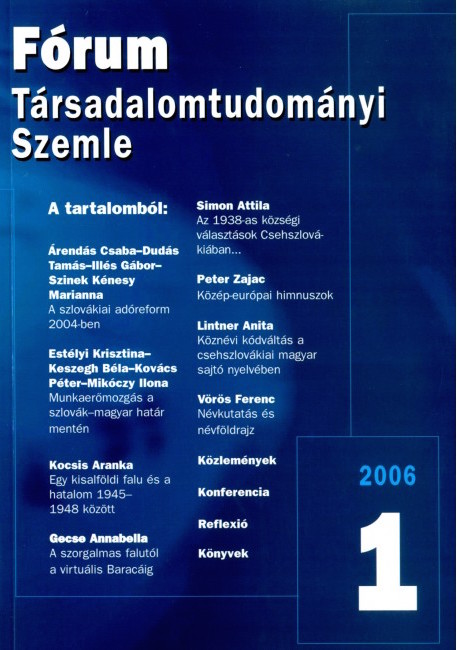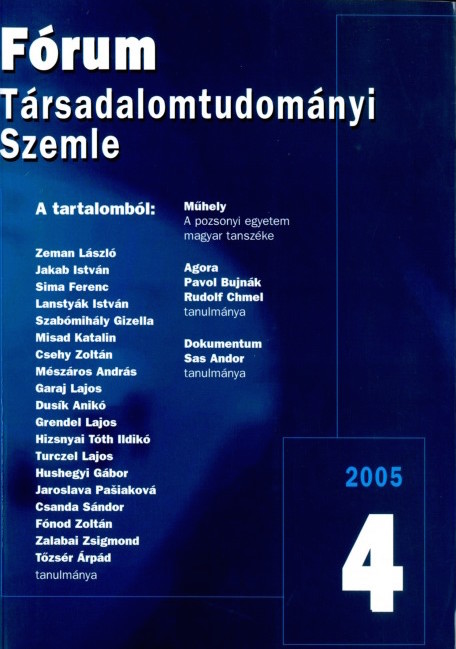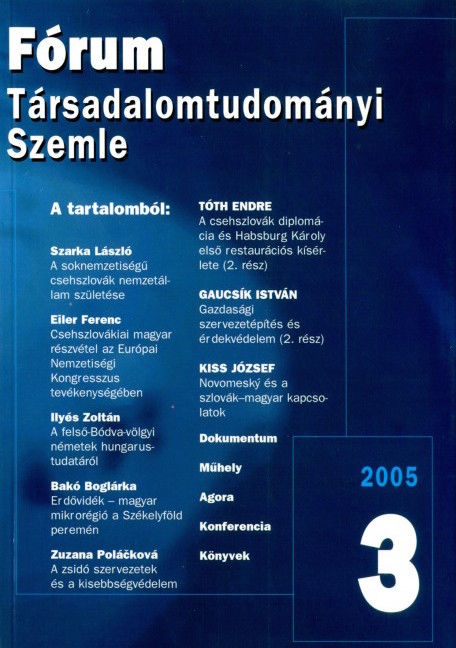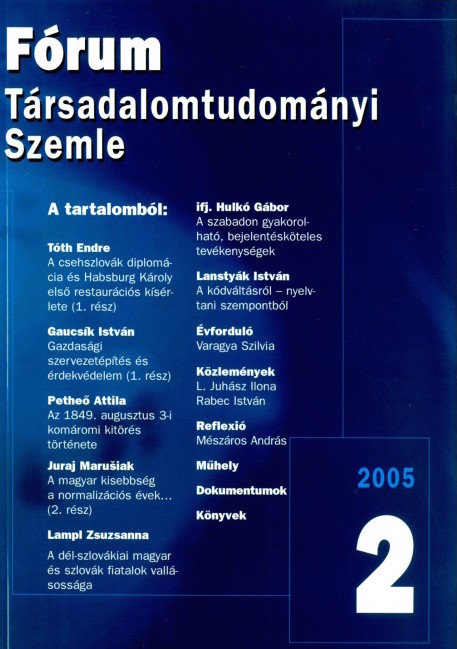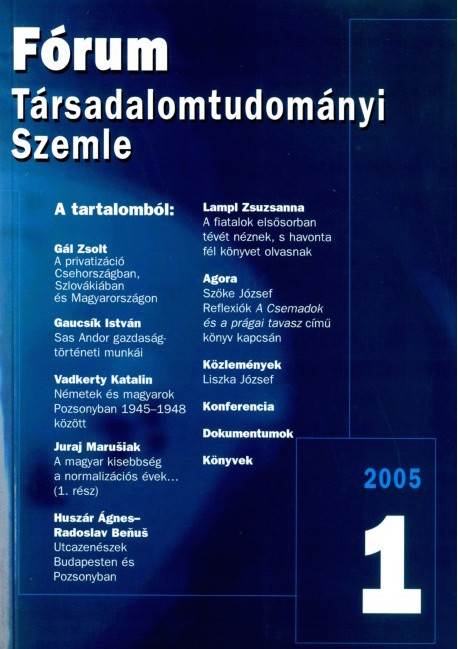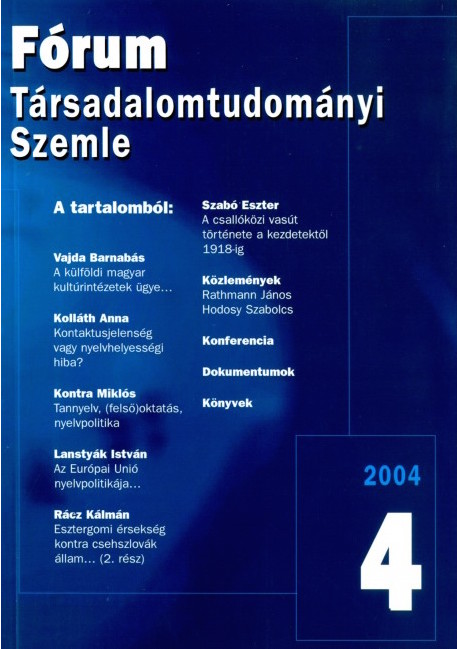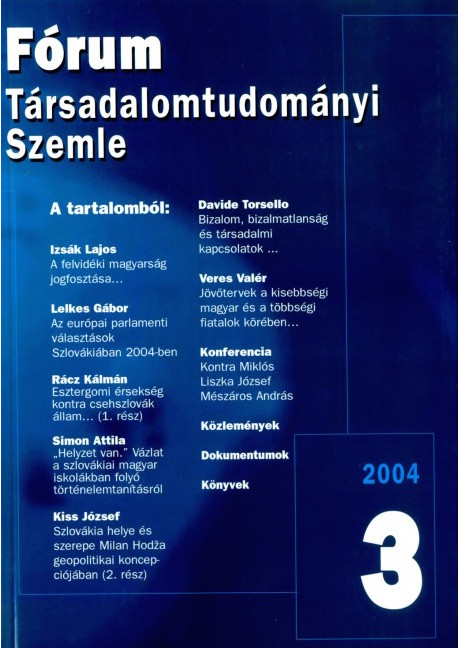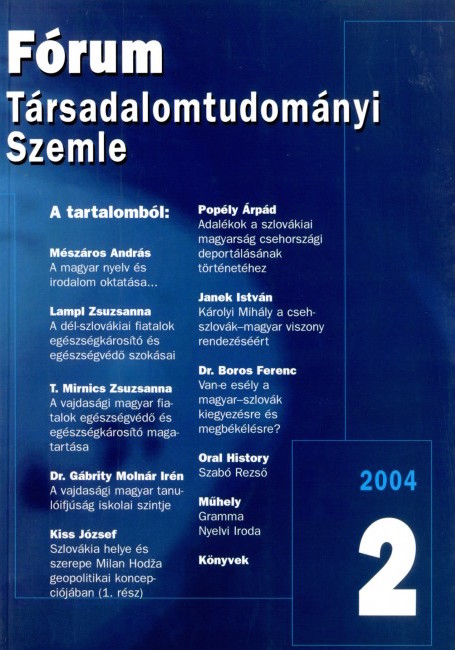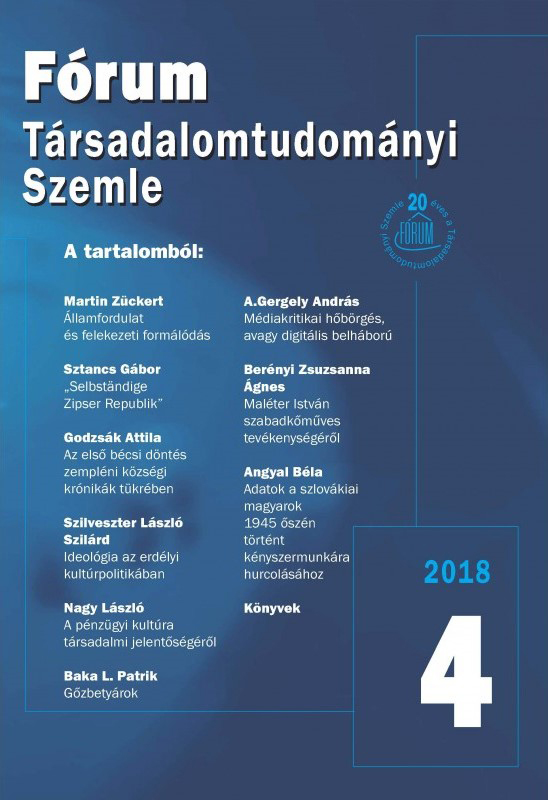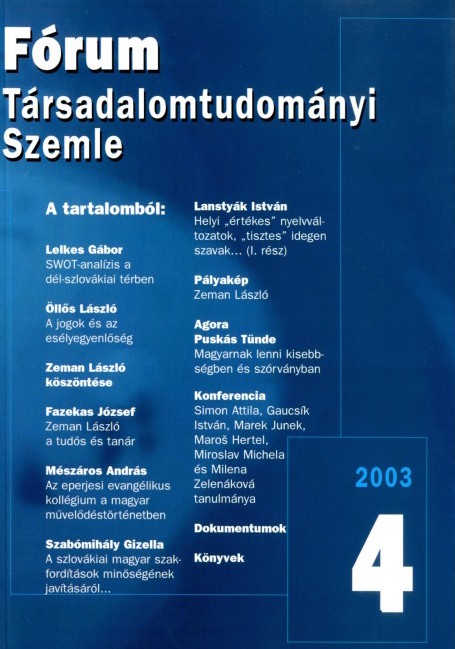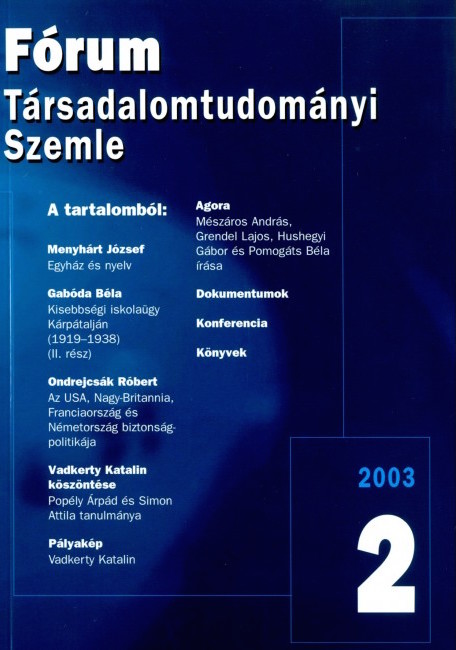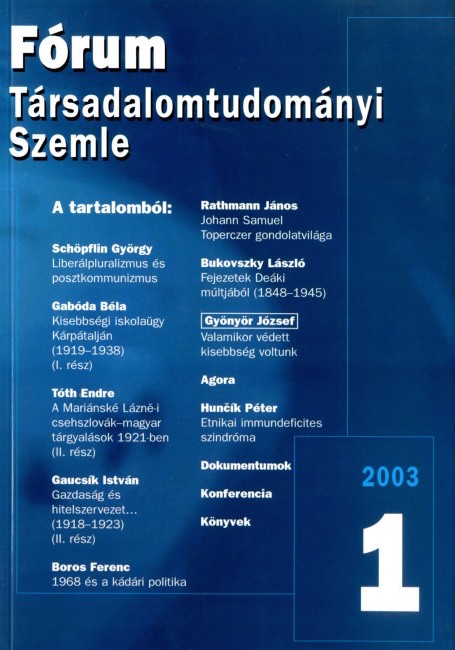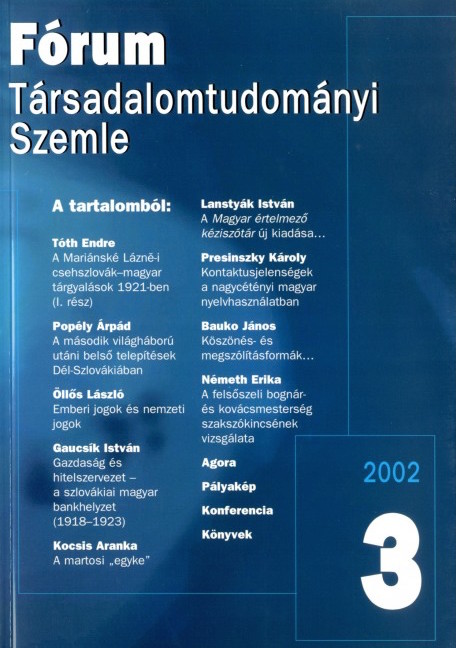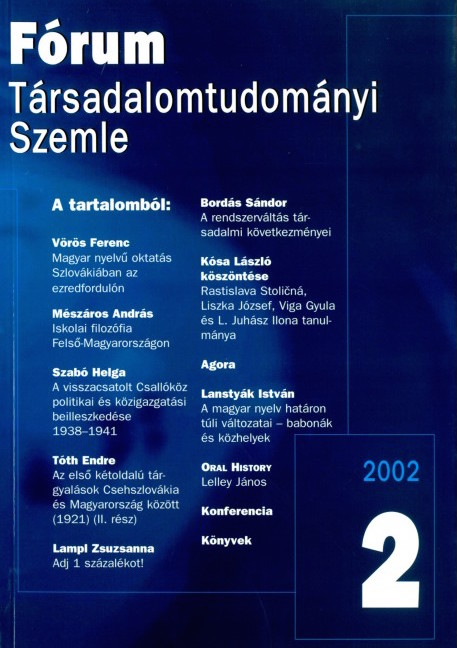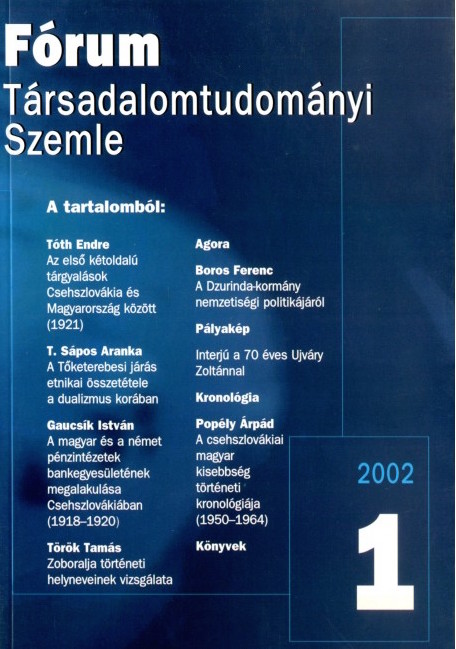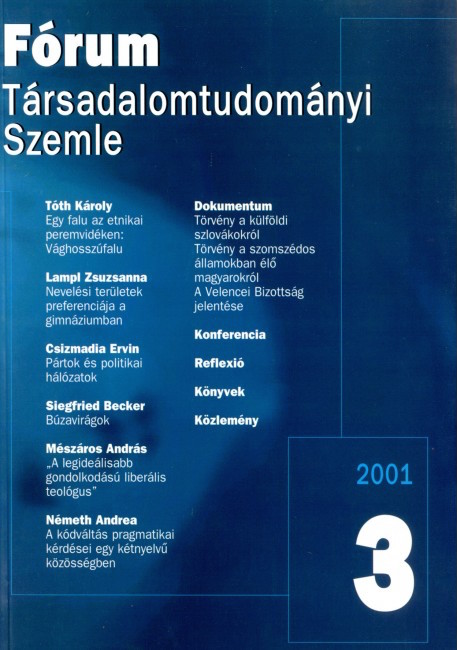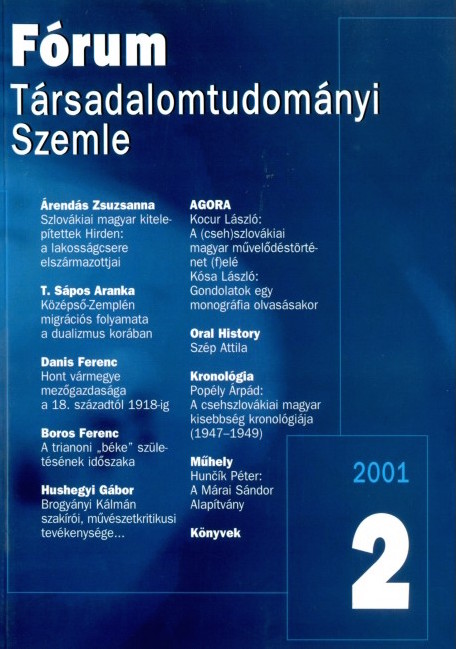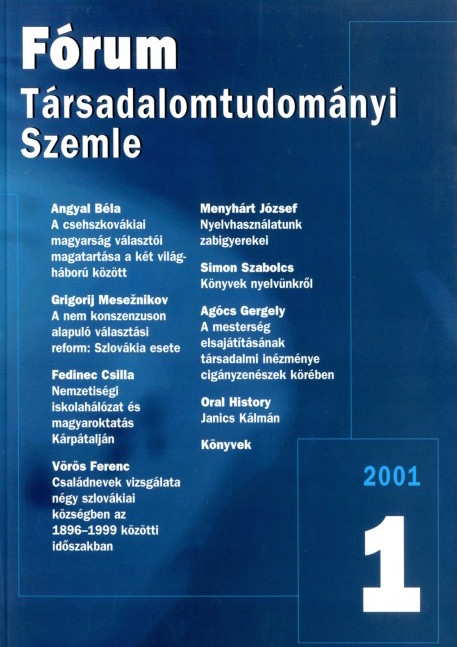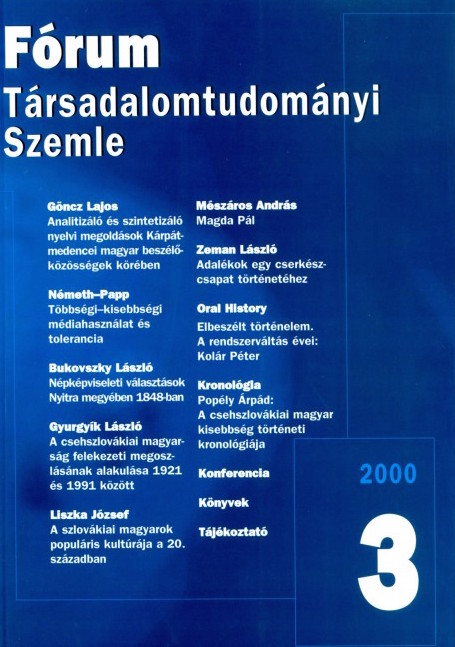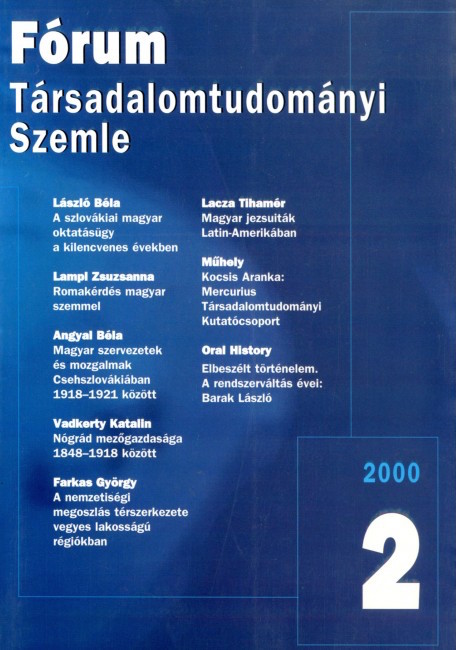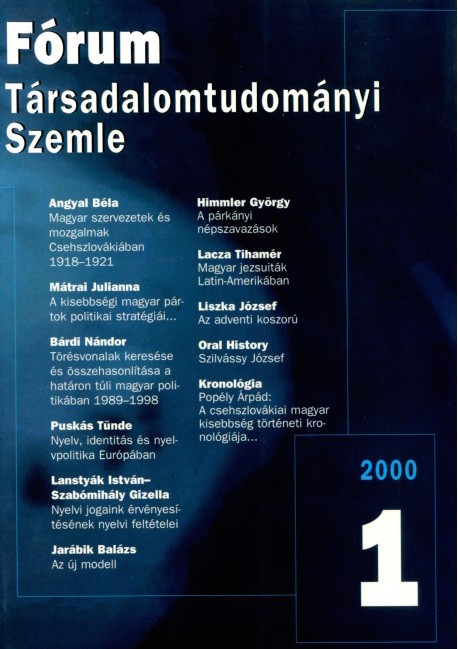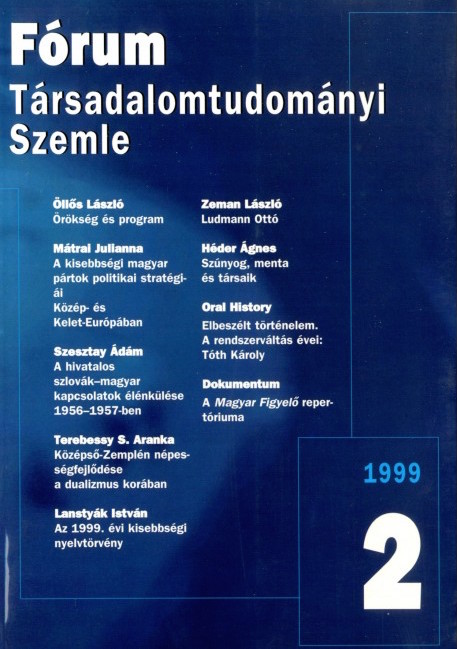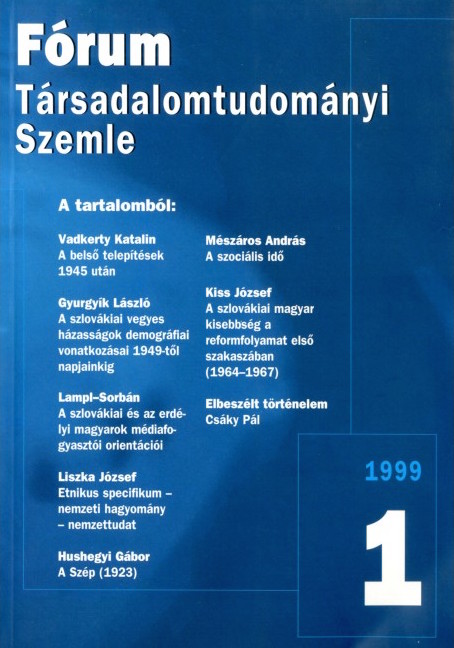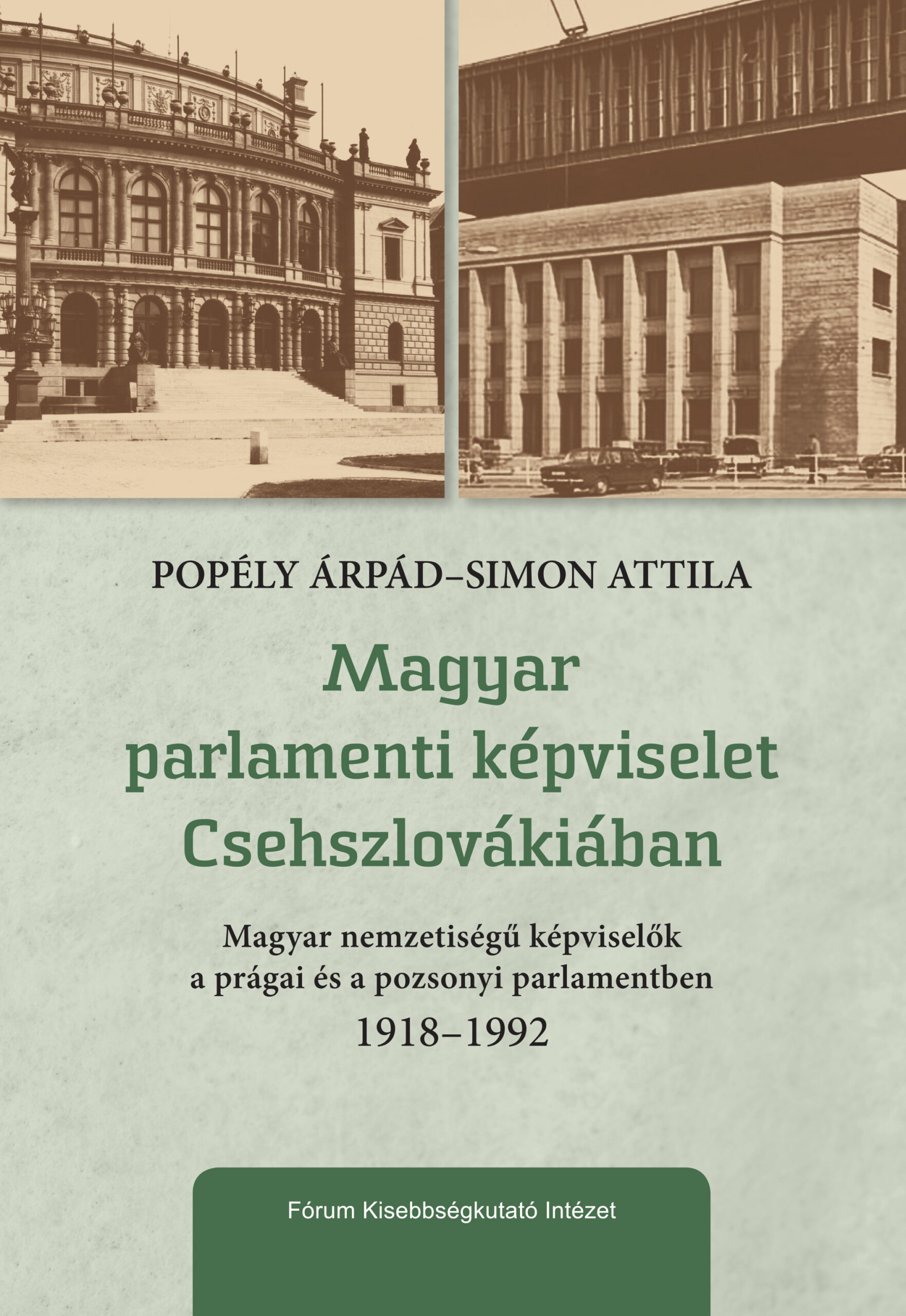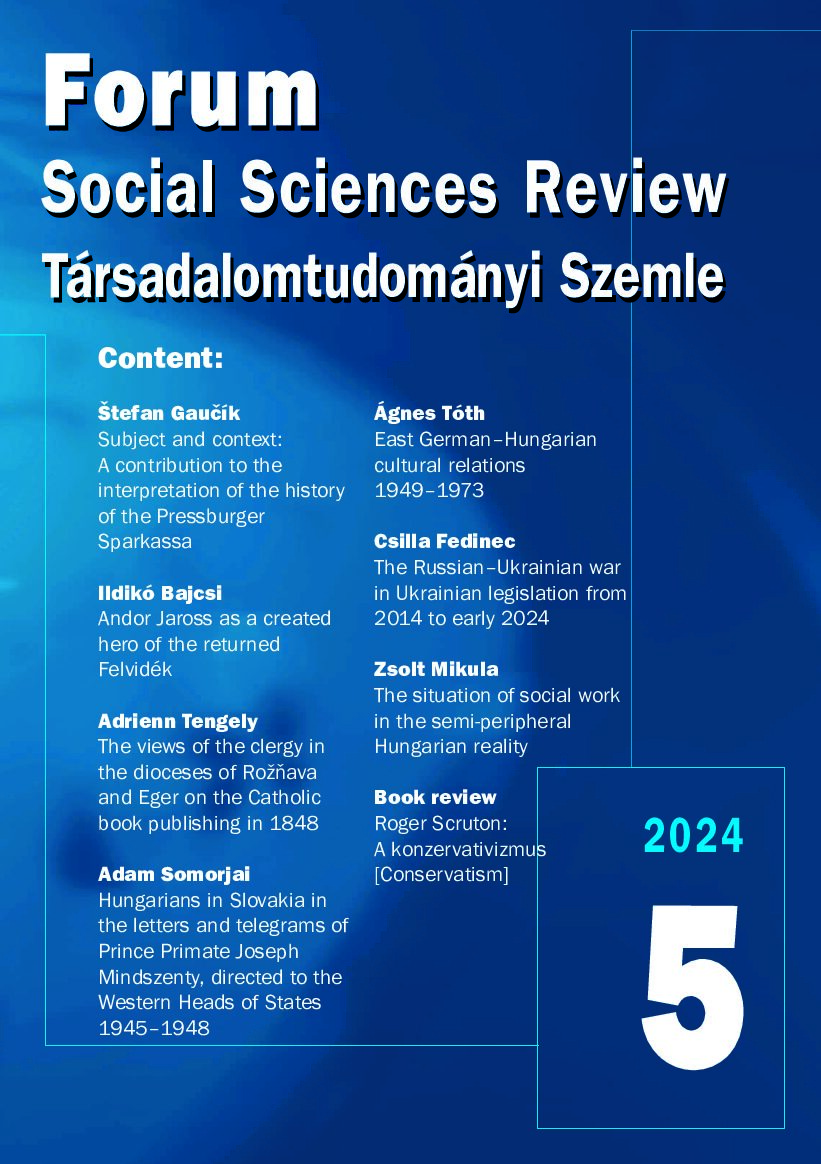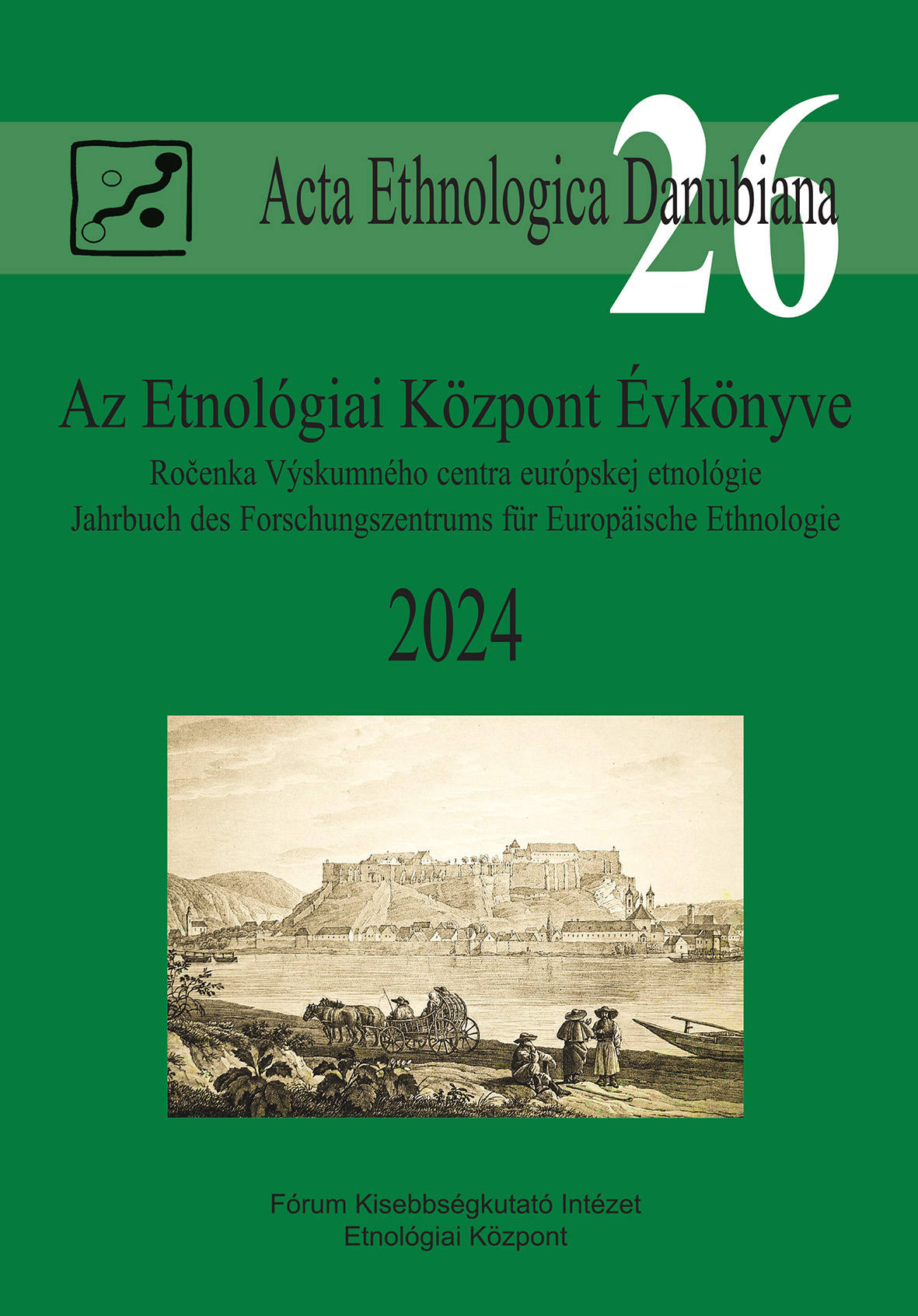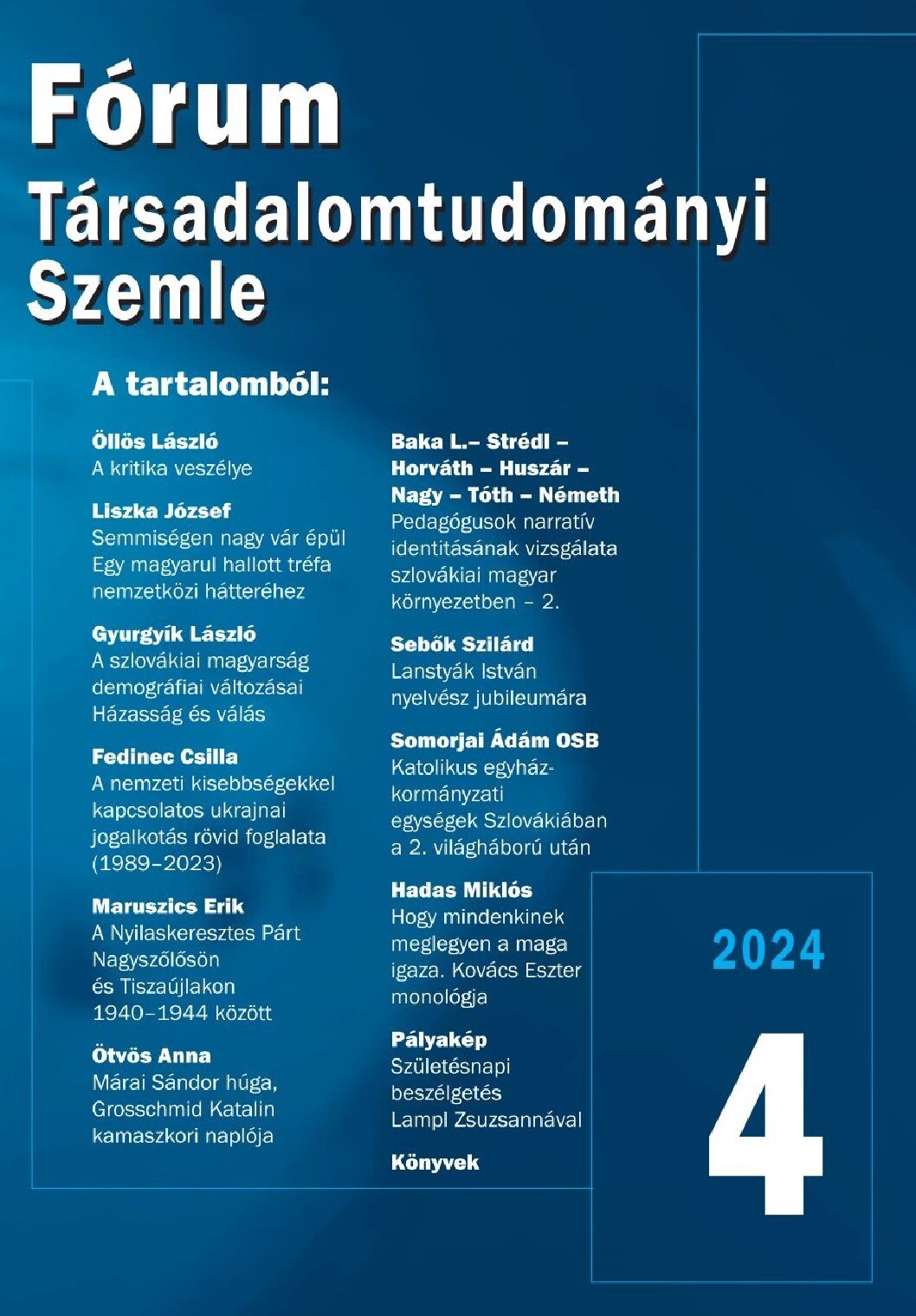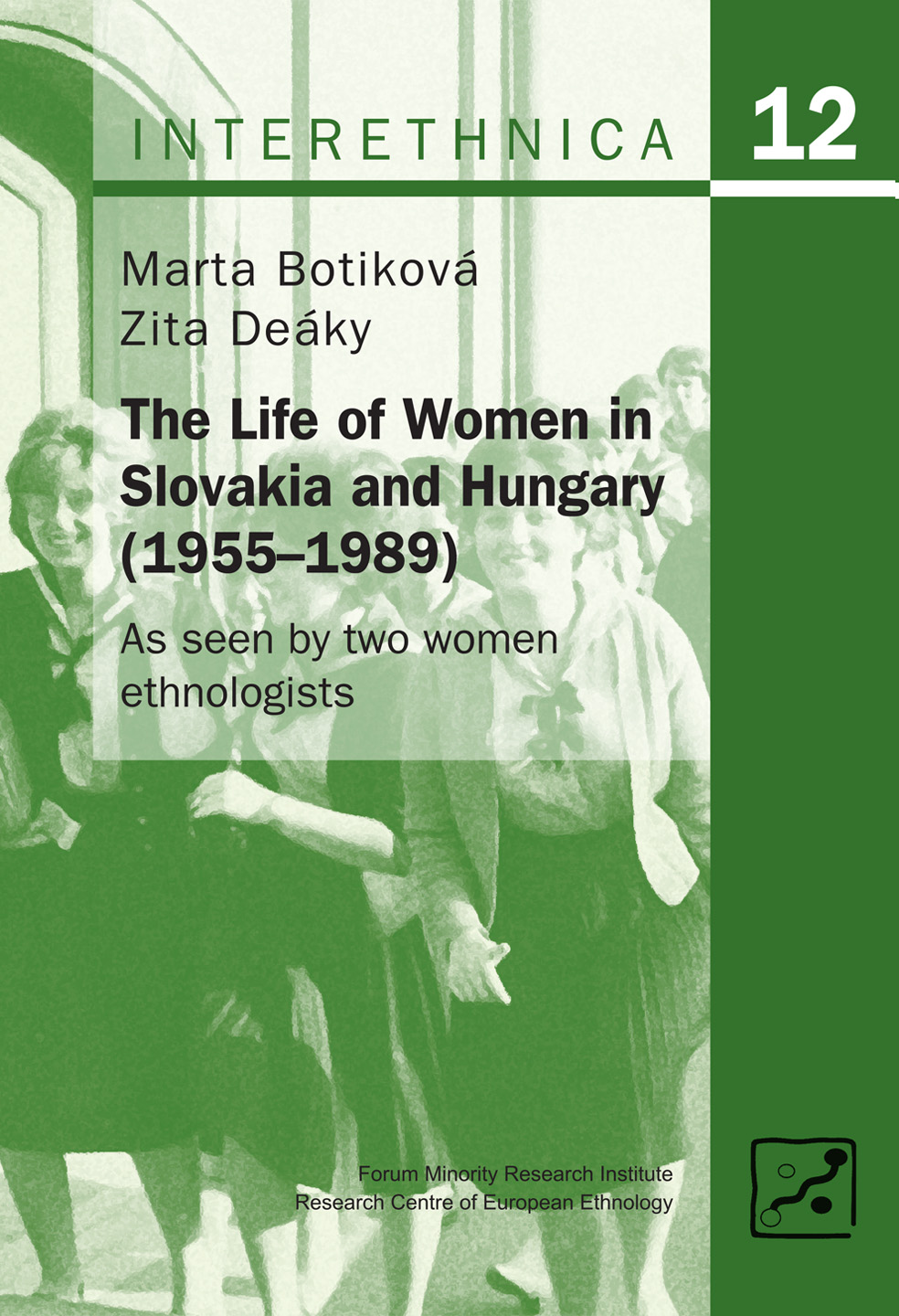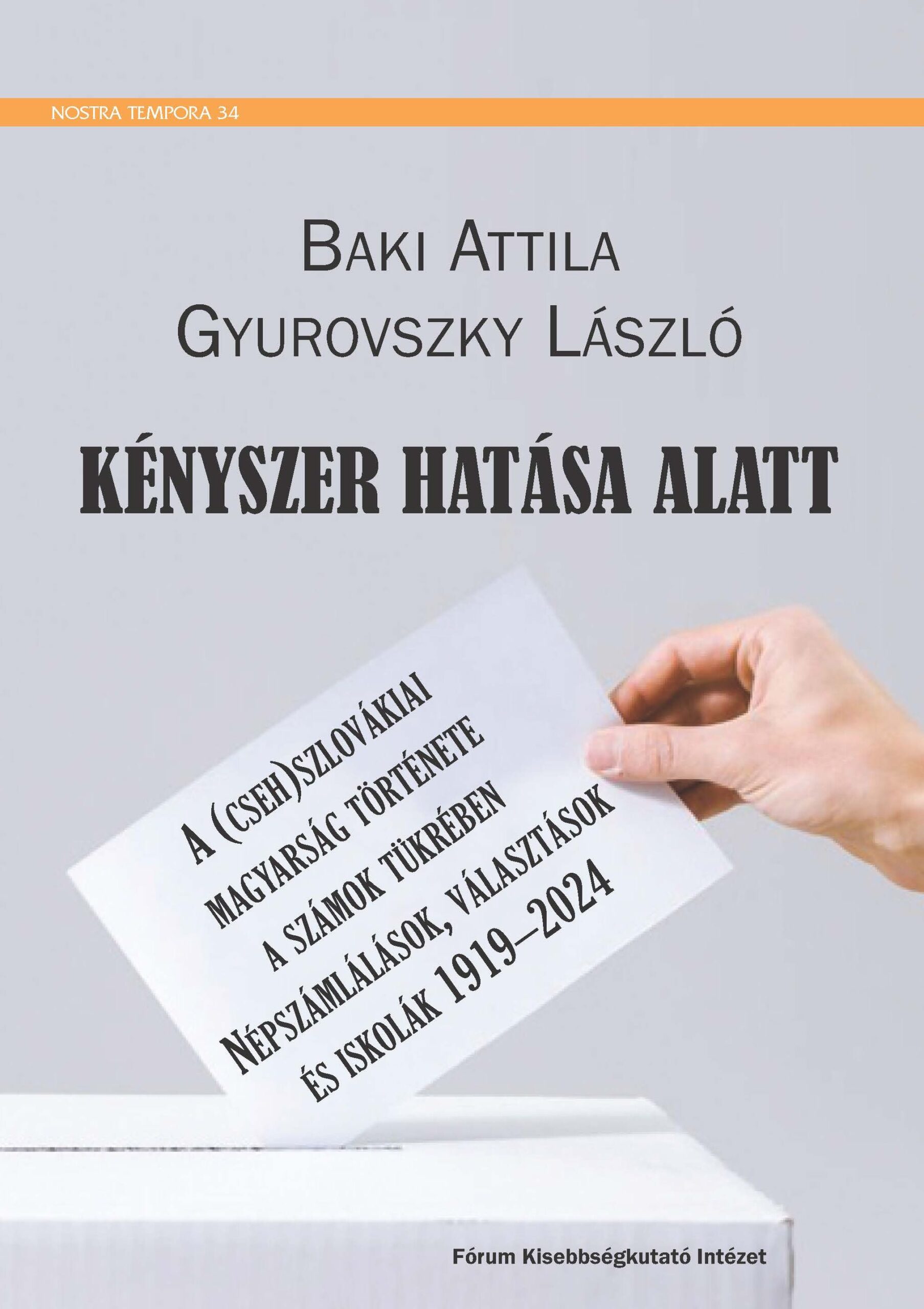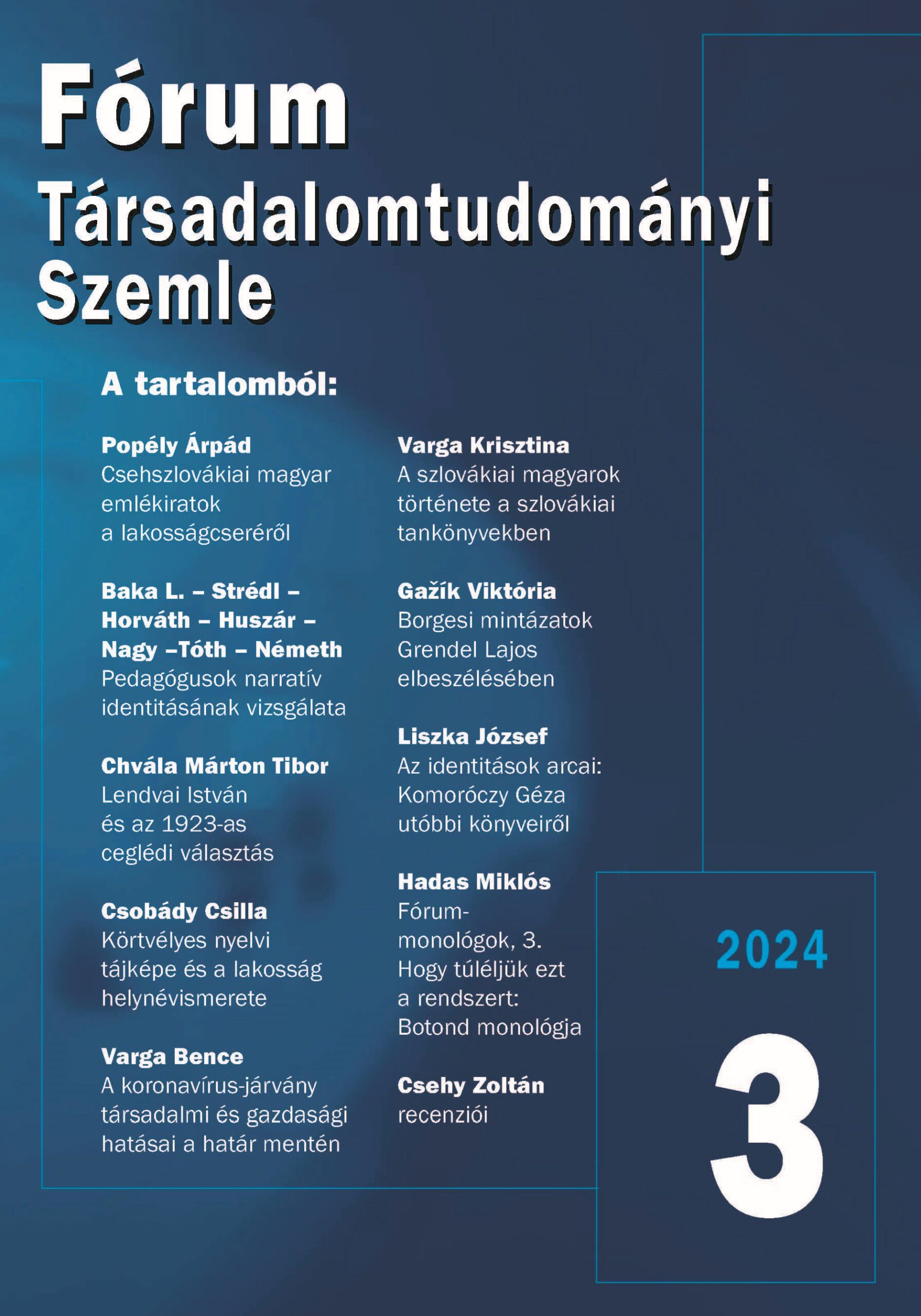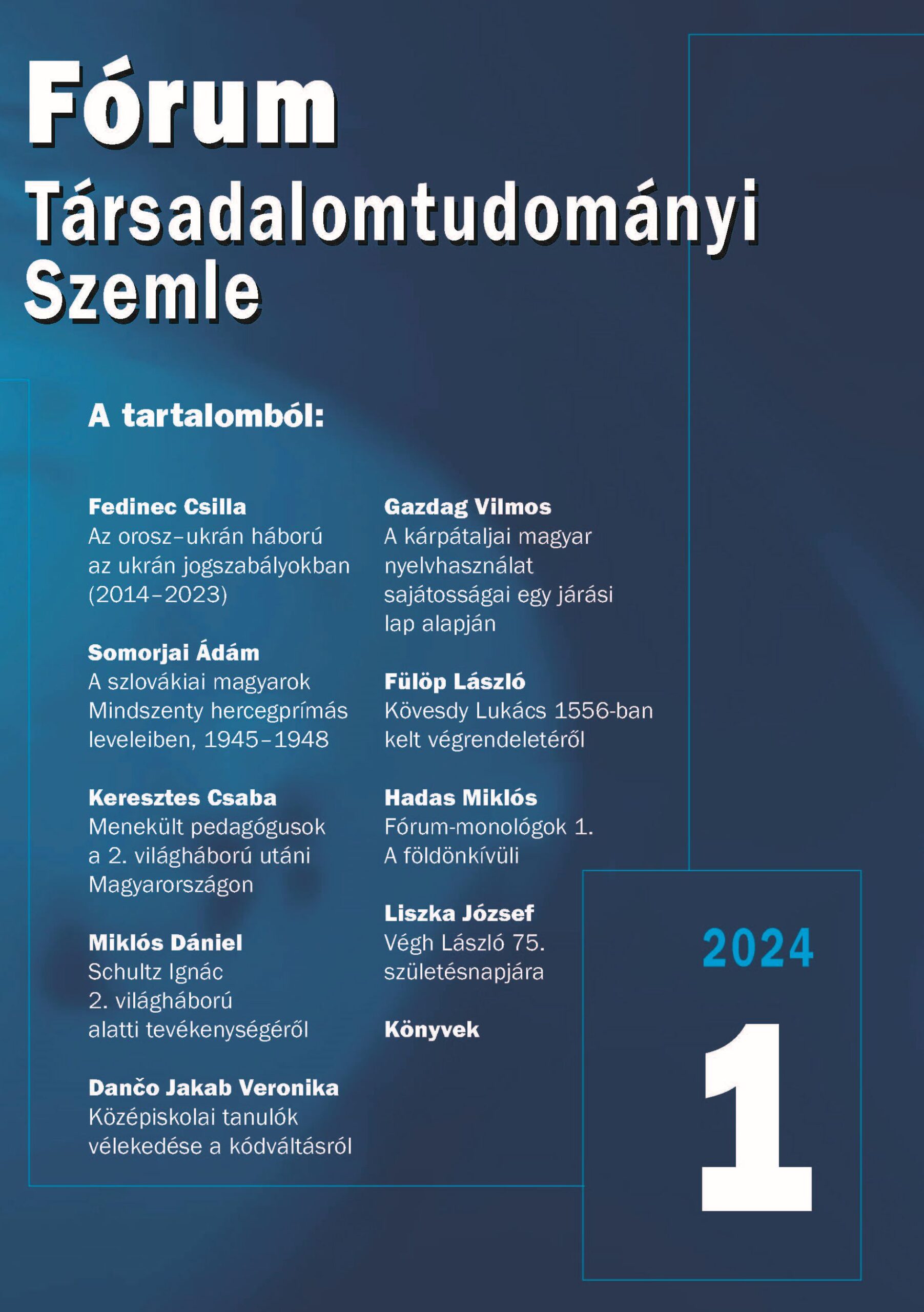The Linguistic Competence of Hungarians in Slovakia. The Language of Media and Cultural Consumption, and the National Identity
This study examines the relationship between the language of media and cultural consumption and the national identity of the Hungarian minority in Slovakia. It also examines the connection between language competencies and the language of media and cultural consumption. Based on the analysis of a representative survey on cultural consumption of Hungarians in Slovakia conducted in 2023, the study concludes that Hungarian-language cultural and media consumption is dominant among Hungarians of Slovakia. However, Slovak-language media and culture also play a significant role. A positive correlation is observed between the language of media and cultural consumption and language competencies. Further findings of the research highlight that Hungarian-language media consumption plays a significant role in preserving national identity. In contrast, Slovak-language media consumption alone does not pose a threat to it. However, the same cannot be fully said about cultural consumption. The results indicate that reading Hungarian-language literature is associated with a stronger national identity, whereas reading Slovak-language literature may be associated with a weaker national identity.
From Hungarian Parties Toward Slovak Parties. Voter and Party Movements 2006–2023
The paper analyses the failures of the Hungarian minority´s political representation, pointing out that the last parliamentary election in 2023 was the worst ever result for Hungarians in Slovakia, the second time that Hungarians failed to pass the 5% threshold and enter the Slovak parliament. In contrast, the 2006 parliamentary election saw a turnout of 11.68% for Hungarians, which meant 20 seats. Among the factors that led to the failure, the author highlights the irresponsibility of minority politicians, the decline and reorientation of the Hungarian electorate, and the decline in willingness to vote. He points out that instead of introspecting their strategies, politicians look for the causes of failure in external factors: the intrigue of the left-wing and liberal media, the unreliability of election results forecasts and opinion polls, their political opponents, etc. He also outlines what steps could or could have been taken to achieve national political representation.
Voters Are Not Lost, They Are Transformed. Changes in Electoral Results in Three Municipalities Between 2006 and 2023
The paper examines the parliamentary election results of three (one in western, one in central and one in eastern Slovakia), in many respects similar municipalities (plus a fourth control municipality) following six elections (2006–2023). For all three, it shows a decrease in the number of votes cast for Hungarian parties and an increase in the number of votes cast for Slovak parties. The figures show a trend: an increasing proportion of voters who previously voted for a Hungarian party or parties are now voting for Slovak political parties, typically among the younger generations. According to the author, the reasons for this change in voter behaviour are to be found in the previously uncharacteristic, public battles articulated within Hungarian party politics in Slovakia. Instead of thinking together, the Hungarian party elite opted for partial solutions that were well-barricaded along sectional lines, and this resulted in their elimination from parliament.
Hungarian Presidential Electoral Traditions and Results in the Minority Regions of the Carpathian Basin
The paper examines the results of the presidential elections in countries with significant Hungarian minorities neighbouring Hungary. It examines the performance of minority presidential candidates in Romania, Serbia and Slovakia, and seeks to answer the question of the significance of a minority candidate´s candidacy for president if he or she has no chance of winning the office. The answer is to be found not in the electoral results achieved, but in the indirect results: the emergence of the minority candidate as a political factor, which can also show the political visibility and potential of the minority he or she represents.
Science in a Hungarian Minority Environment—From the Point of View of Ethnography
The study attempts to outline the main aspects of ethnographic research on the Hungarian minority in Slovakia and the content of the papers published during the quarter of a century of the Fórum Társadalomtudományi Szemle [Forum Social Sciences Review], and to present the results of the research on national minority culture. In conclusion, the ethnographic and cultural anthropological publications of the Forum Social Sciences Review have in many respects broadened our knowledge of the culture of the Hungarian minority. In three respects, a definitely richer and more nuanced picture emerges on the basis of the papers in the various sections: 1. First and foremost, through the theoretical and methodological aspects (especially European ethnology) of research on the Hungarian minority. As a result, we gain a more nuanced picture of interethnic relations, the interrelationships of social stratification (occupation, age, gender, etc.), in addition to the linguistic and religious determinants of ethnic identity. 2. The principle and practice of regionality is applied to the description of territorial, local and settlement examples, and, in many areas, it brings to the surface new knowledge in the field of material-factual education of Hungarian ethnic culture and folklore, and folk customs in a broader sense. (Perhaps the research of folk music and folk dance could have been given more space.) 3. Special mention should be made of the publications dealing with sacral ethnography and popular religious practice, both in terms of quantity and new approaches to analysis. It is perhaps not an exaggeration to assume that this has also played a part in the creation of the internationally esteemed database of sacral relics (Sacral Relics Archive; Sacral Relics Bibliography; Sacral Relics Resources) by the Centre for European Ethnology of the Forum Minority Research Institute. All in all, the Forum Social Sciences Review is an integral trace and document of the cultural history of the Hungarian minority in Slovakia and of (all) Hungarians, which will hopefully continue to expand.
The Role of Fórum Társadalomtudományi Szemle in Hungarian Linguistics
In the past quarter-century, the Slovakian-Hungarian social sciences review has become a major forum of publication for—among other fields—linguistics. It has covered a considerably wider range of topics than the linguistics journals published in Hungary. The work of two authors is discussed in some detail. Károly Tóth’s study on language shift in Vághosszúfalu (Dlhá nad Váhom) is a unique and exemplary analysis of the natural assimilation of Hungarians in a village (not caused by state violence but the economic power of Slovaks living in the nearby town of Šaľa). István Lanstyák was the first linguist to describe Hungarian as a pluricentric language (1995). He also published a detailed critique of Hungarian language cultivation (2003–2004), exposing its linguistically erroneous and outdated bases, and the social harm it causes. Finally, in the section “Scholars and politicians”, Kontra cites Susan Gal (USA), who discusses how she would be willing to give advice to Hungarian politicians wishing to slow down or halt Hungarian language shift in the countries adjacent to Hungary—but none of them has ever turned to her for advice.
The genesis of the 1927 Czechoslovak anti-Gypsy law
The author deals with the situation of the Roma minority in Czechoslovakia between the two world wars. In the introduction, he briefly reviews the results of Czech and Slovak research on Roma studies. He points out the difficulties of collecting statistical data on the Roma. Special attention is paid to the so-called Slovak Roma population and the social consequences. It deals in detail with the origins of the so-called Gypsy Law of 1927, the parliamentary debate and the future of Czechoslovak Roma policy. The author concludes that the Roma in Czechoslovakia were politically, economically and socially marginalised. Masaryk’s ideas had no positive impact on the Roma policy of Czechoslovak governments. The mechanisms of Czechoslovak parliamentarism, the organs of power-sharing, which bore the marks of both modernity and unconventionality, were unable to innovate, on the contrary, they failed to apply the Masarykian policy of tolerance and continued to discriminate against the Roma.
The Sporting Life of Galánta Before the First World War
In Galánta, in the second half of the 19th century, hunting and the associated horse riding and shooting were the main activities. Before the local sports clubs were formed, lawn bowling (tenpins) was popular in the town, and there were certainly those who took up gymnastics and athletics. Swimming and bathing were popular on hot summer days, with the unsafe banks of the Váh River being a favourite spot. In the first decade of the 20th century, the sporting life of Galánta began to spiral up very rapidly. Sándor Jandly-Döbrentei, the high sheriff of the Galánta district, played a significant role in this process, not only as a fan of physical exercise but also as a major promoter. It was thanks to him that in the years before the First World War, Galánta’s sporting life was the most active and colourful in the wider region. This flourishing sporting life came to an end with the outbreak of the First World War. The entry of men into the war made the work of sports clubs inoperable and sport lost its significance as an important factor in the social life of the population.
Hybrid “Monodrama”—Subjective Side Note on the Birth and Afterlife of a Monologue
This essay consists of a reflection on an in-depth sociological interview conducted with the author. The text focuses on the subjective experience. The research of sociologist Miklós Hadas concerns the problem of the changing and plural habitus over time. Due to the author’s professional training, he first contextualizes his experience according to some ethnographic and anthropological ideas—establishing that the so-called etic and emic aspects are completely (and interestingly) resolved within the framework of the monologue. Based on a series of subjective experiences, he also provides possible answers to a series of questions related to the monologue. For example, how much the text can be personal or shared? Can it be considered a whole or are we talking about a kind of specific fragment? Finally, he also provides some possible answers to why the genre of the monologue is a useful tool for examining the identity and habitus of persons associated with an ethnic minority.
The Right to Education of National Minorities in the Mother Tongue in Serbia and Montenegro After the Separation of the Two Countries
The study discusses the issue of the right of minorities to education in their mother tongue in Serbia and Montenegro, with a special focus on the period following the separation of the two countries. The study shows how language policy in the newly independent states has changed, highlighting the rise of nationalist sentiment and related language issues that have affected education and language rights of ethnic minorities. Recognition and safeguarding of language rights in both Serbia and Montenegro has shown progress, although a number of obstacles remain in practice. The analysis specifically addresses the situation of Albanian, Bosnian, Croatian and Roma languages, which are present in both Serbia and Montenegro but benefit from different levels of state support.



